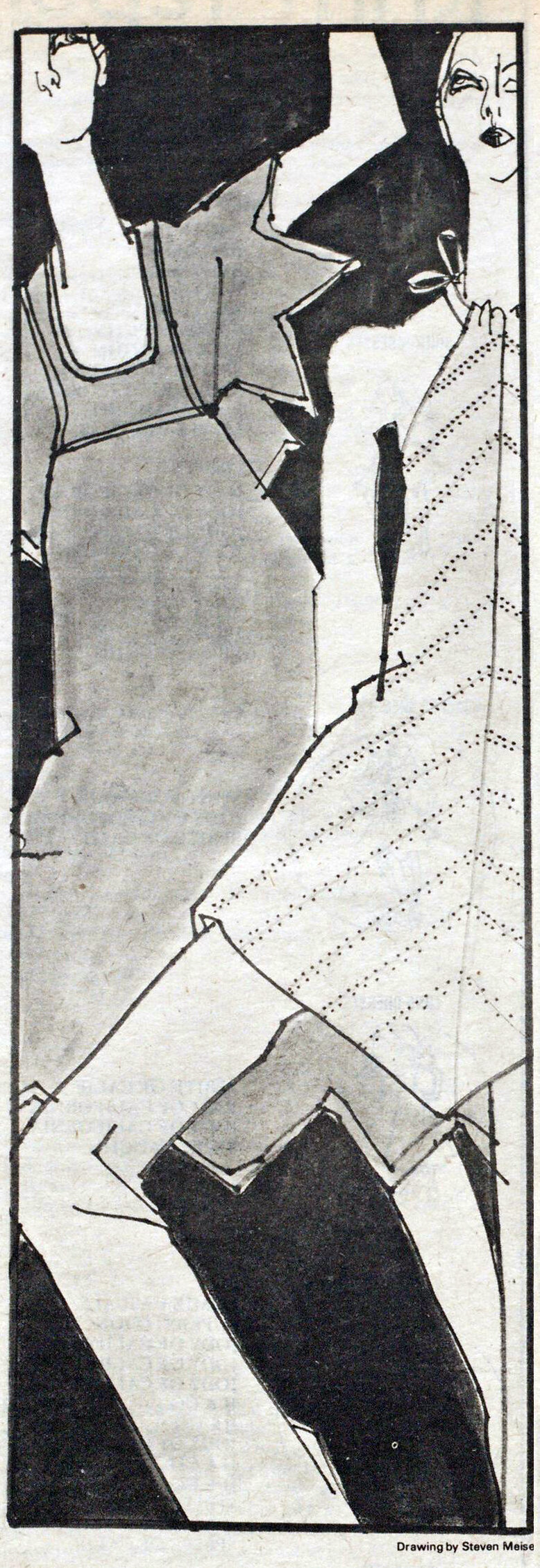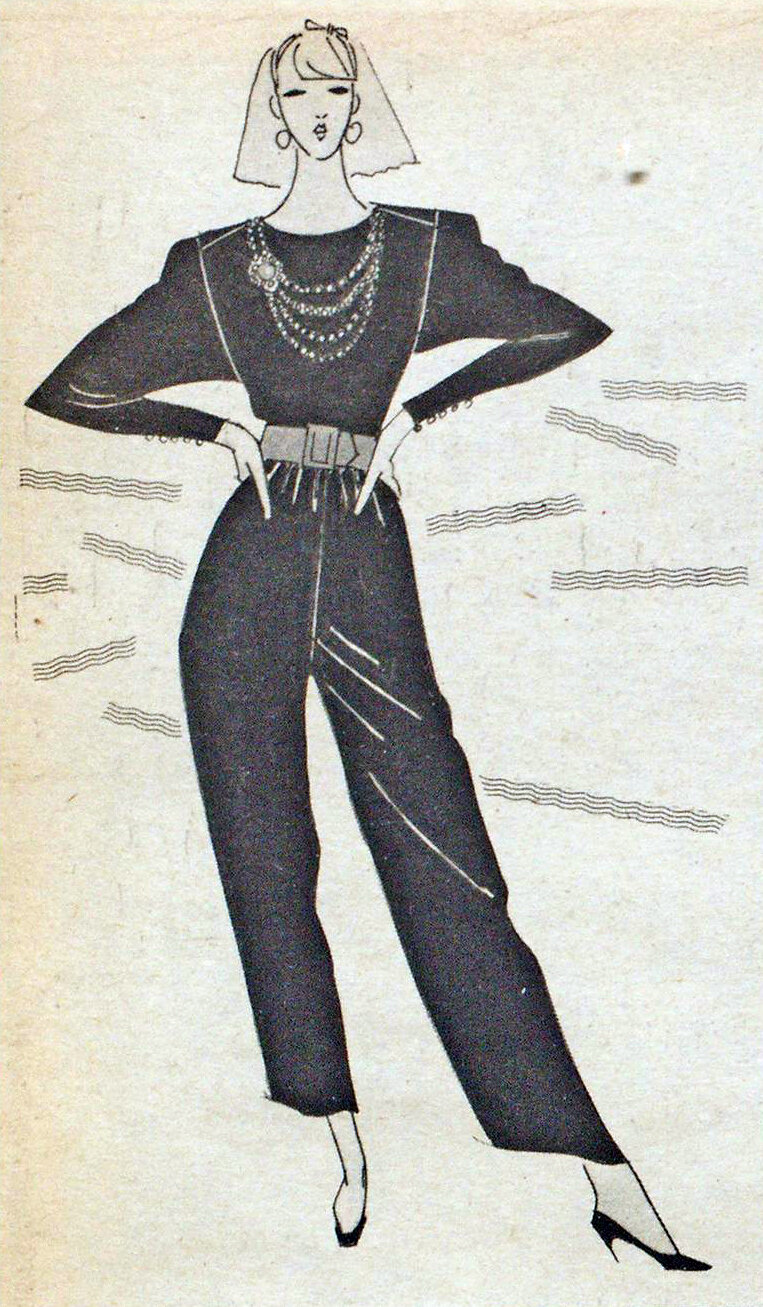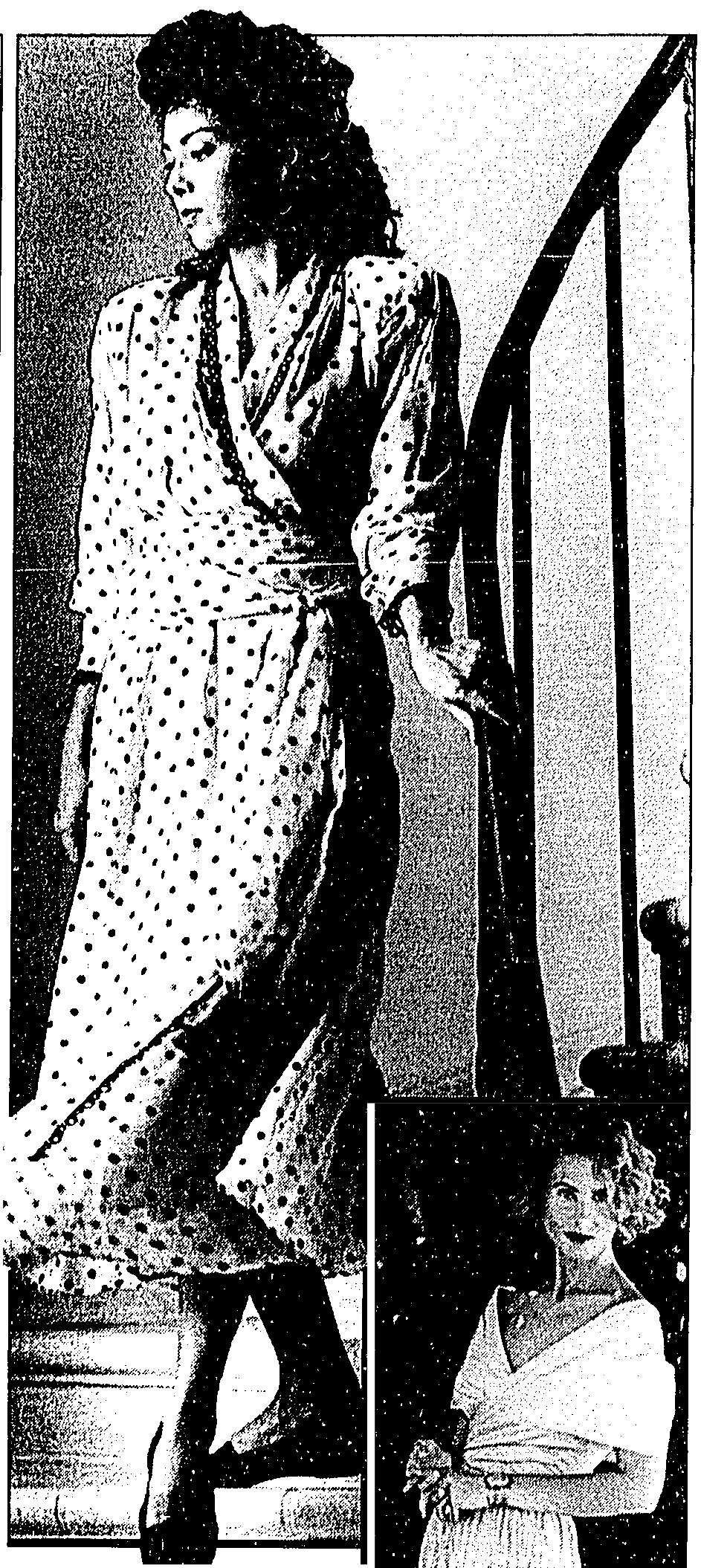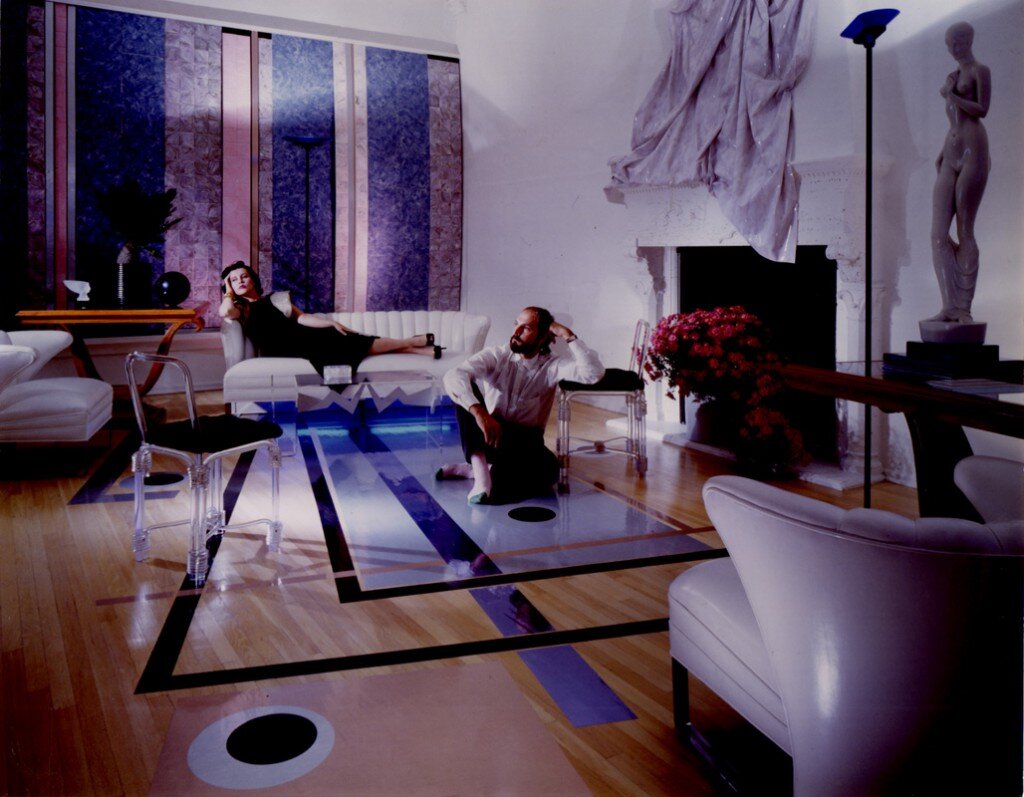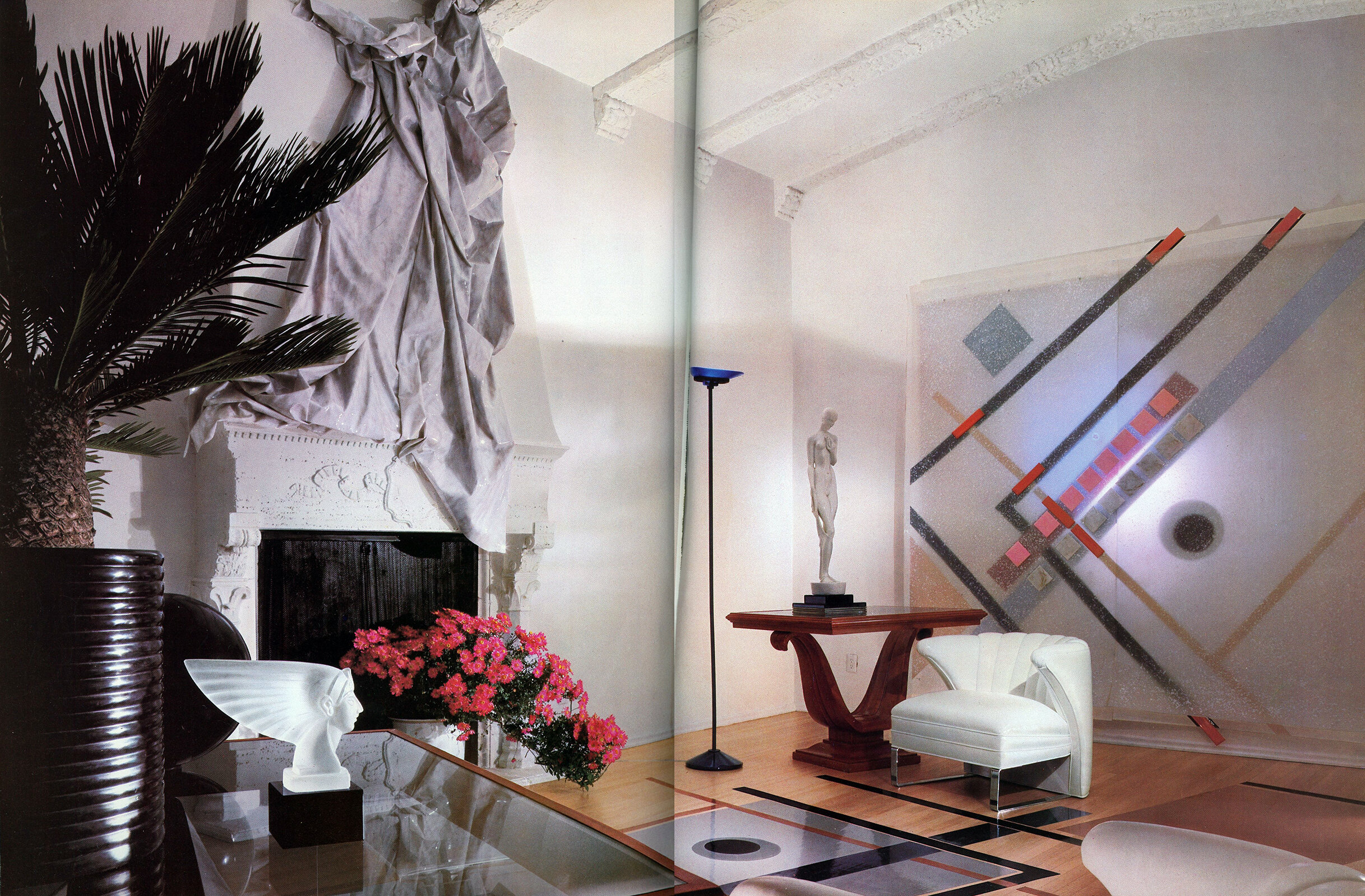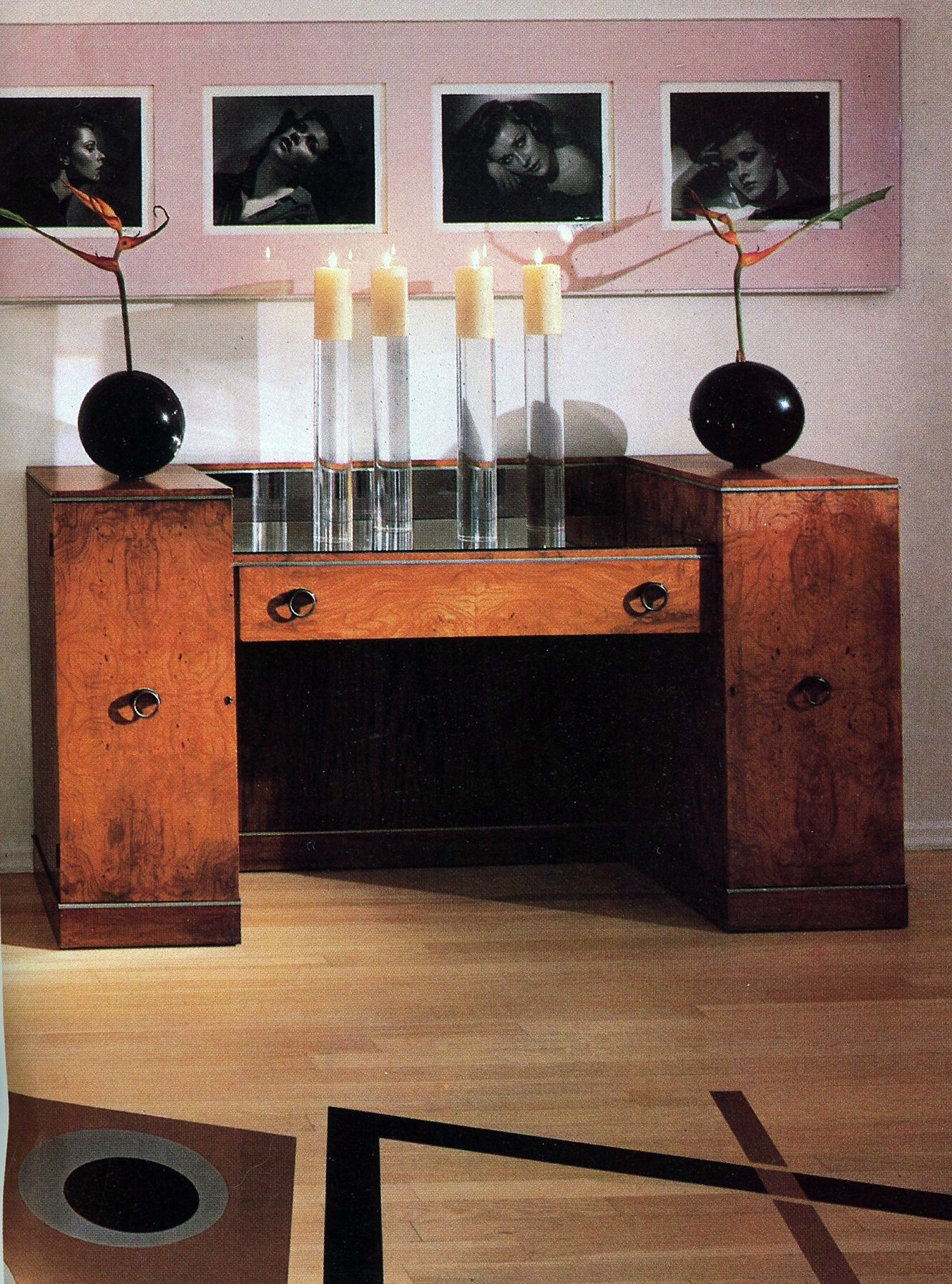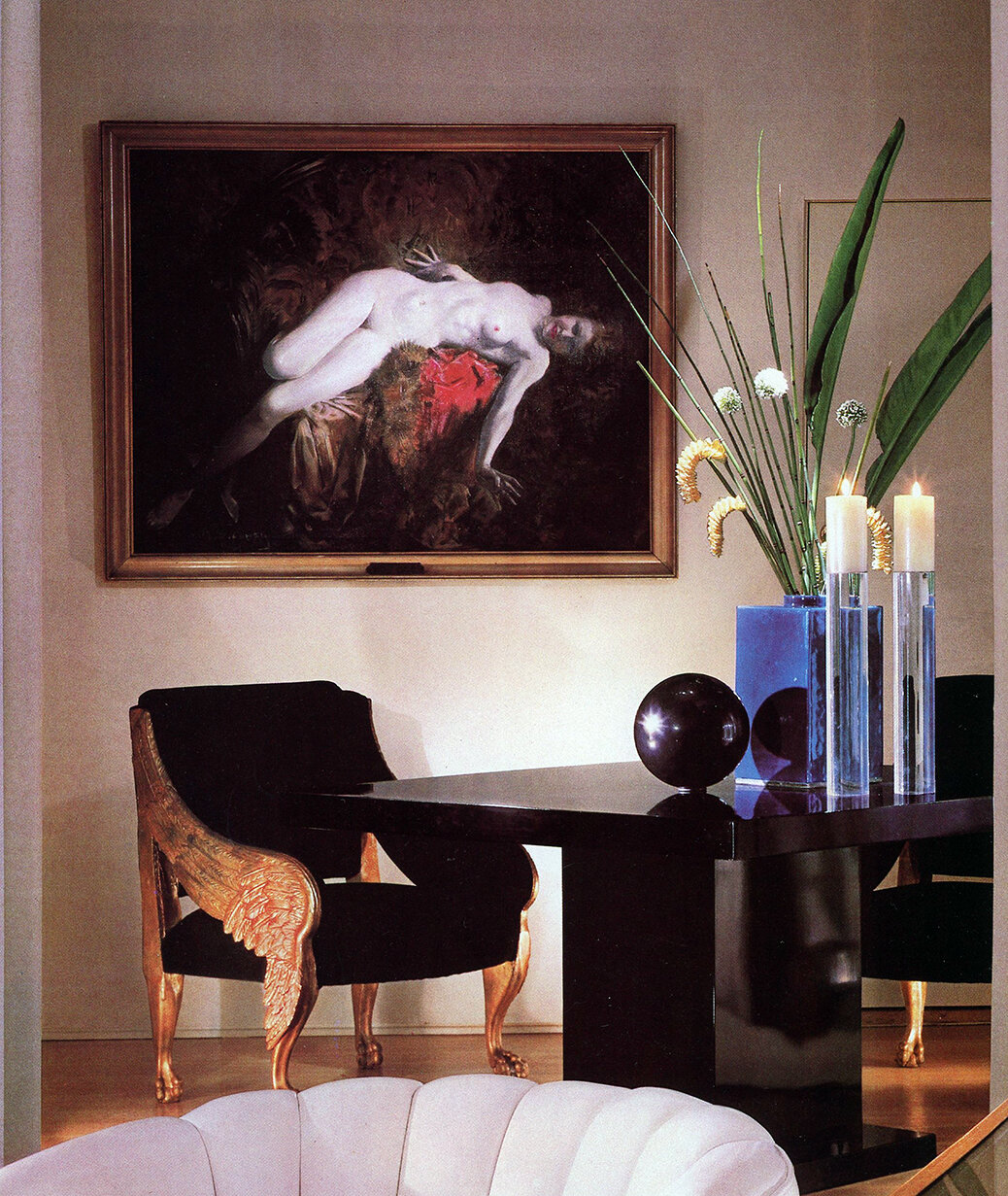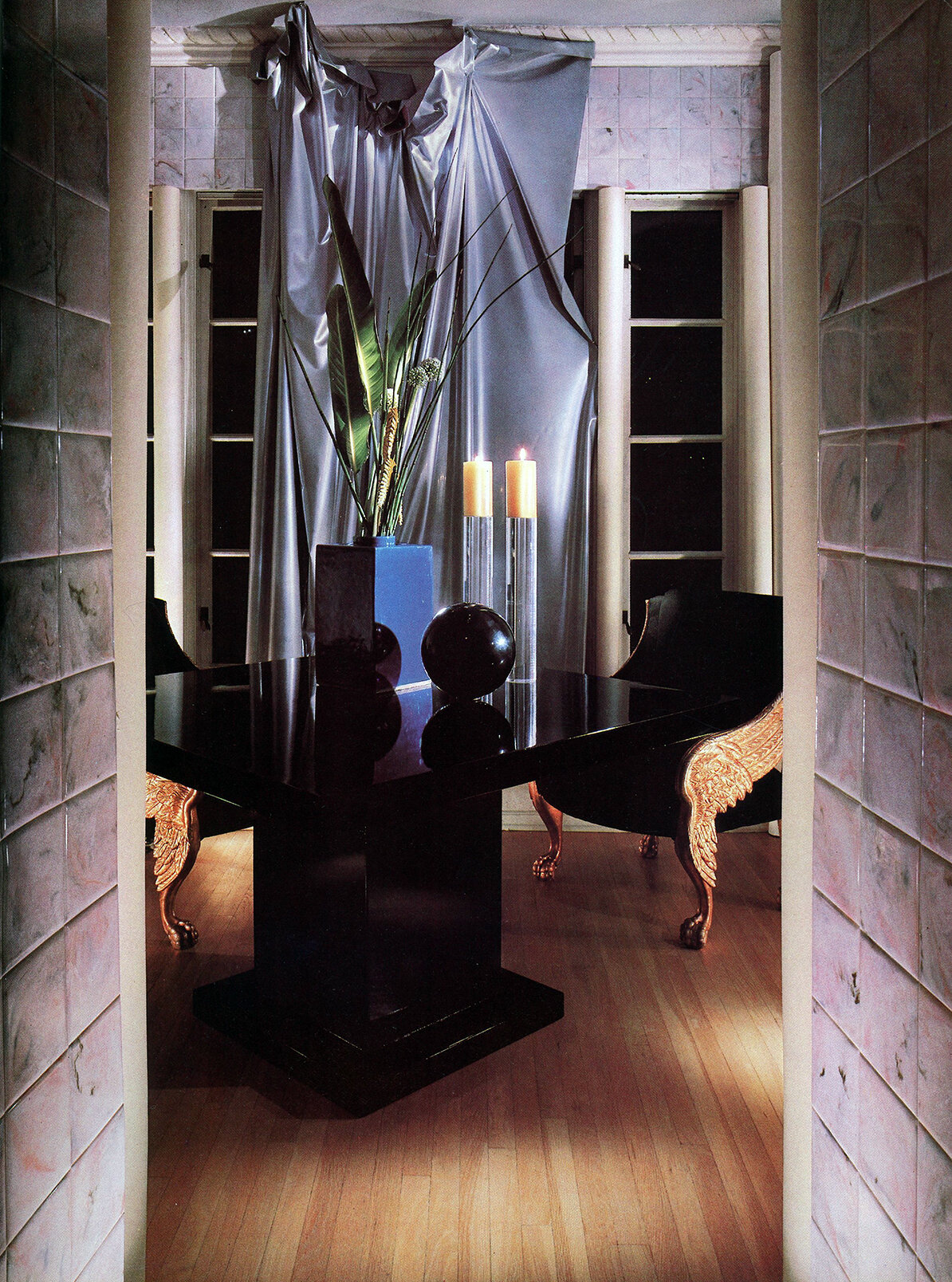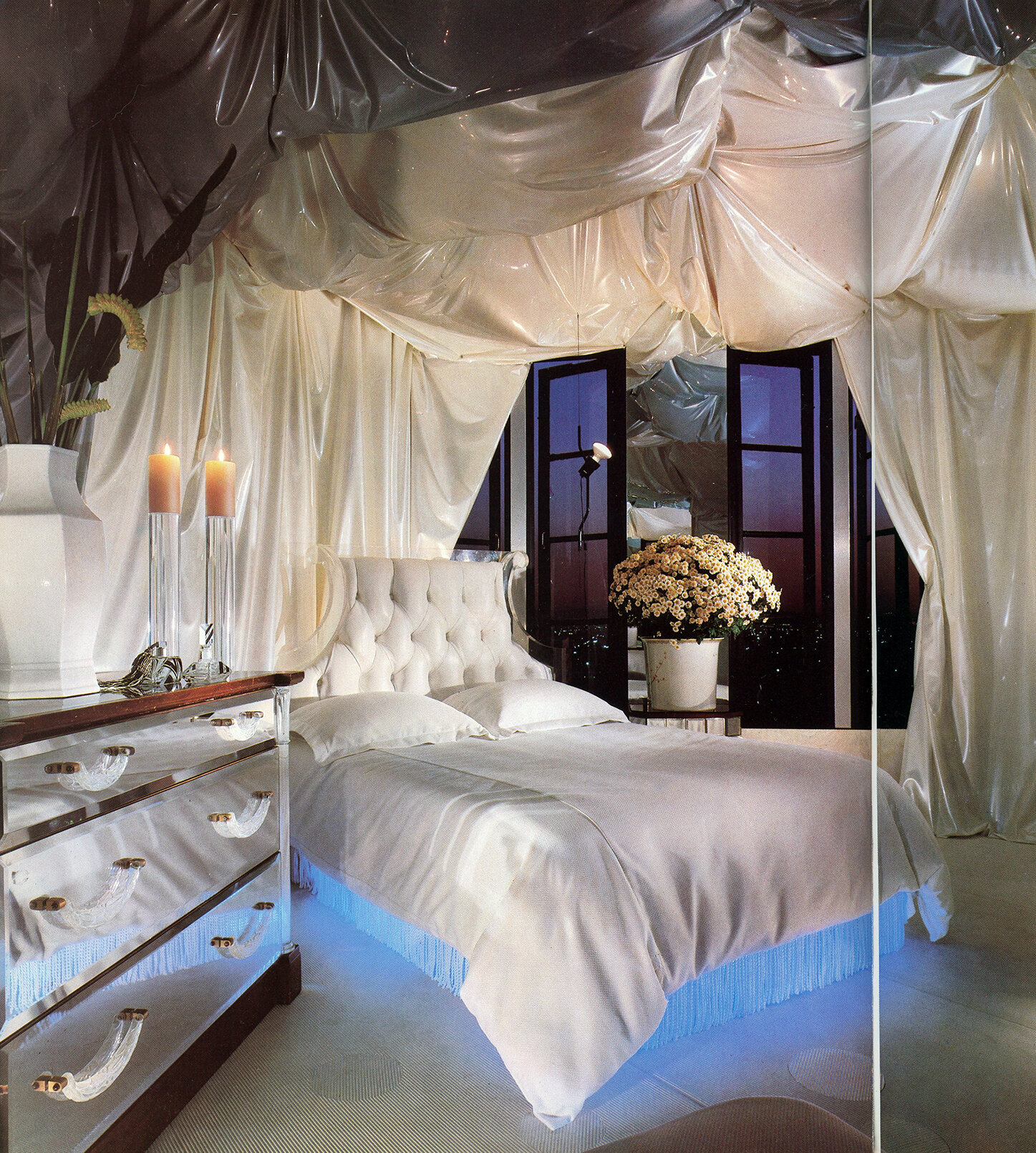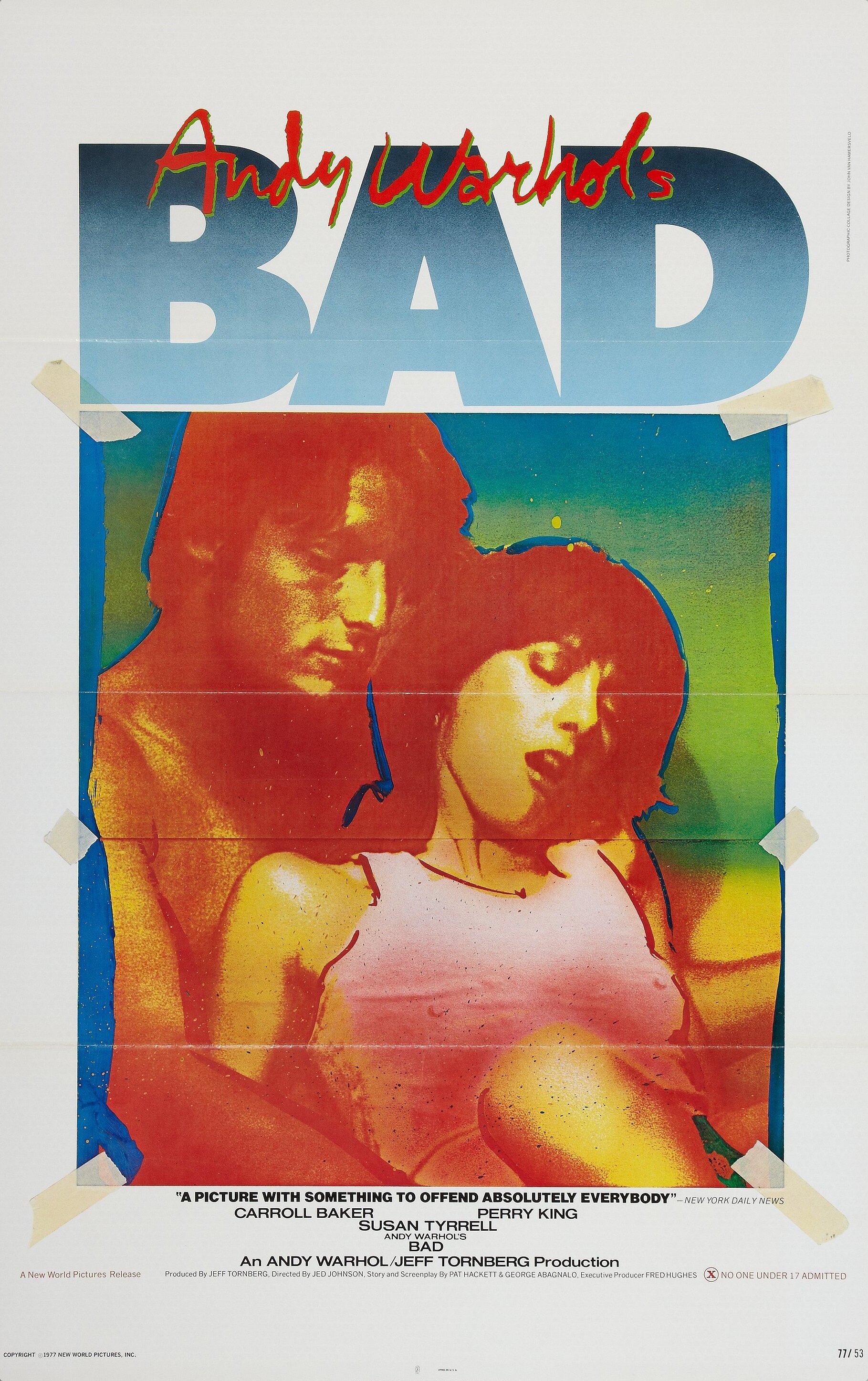Episode 26: Tere Tereba
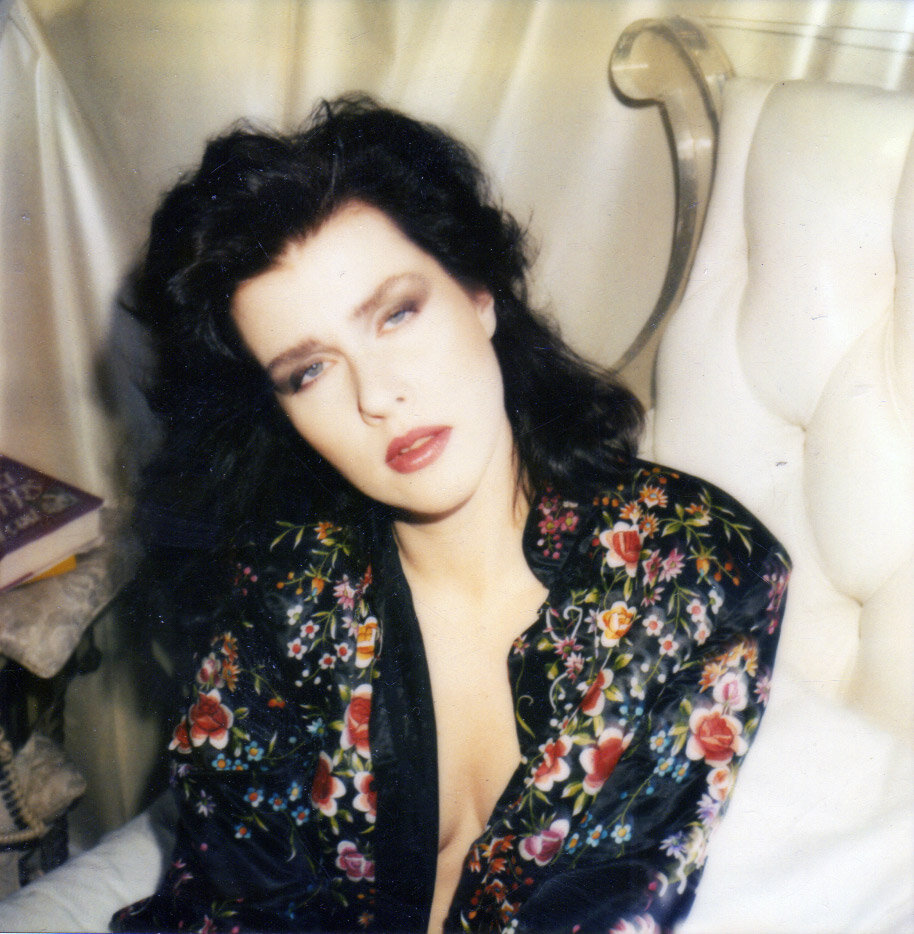
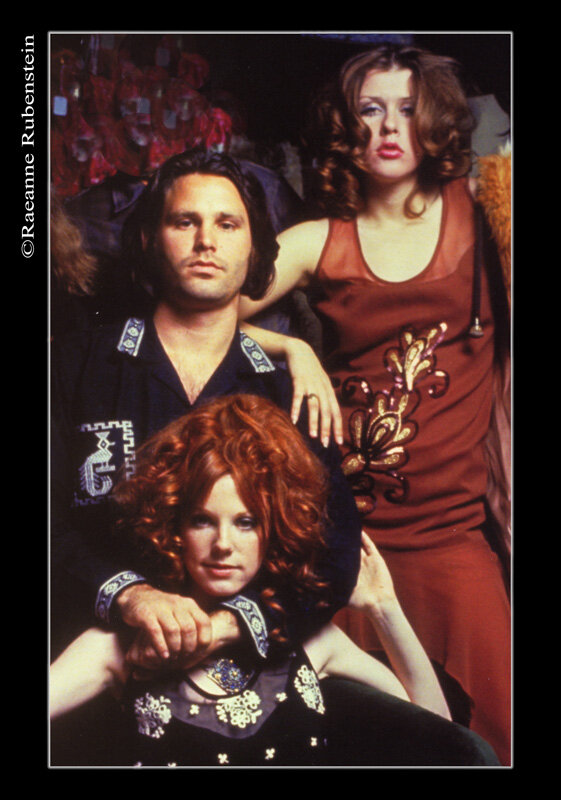
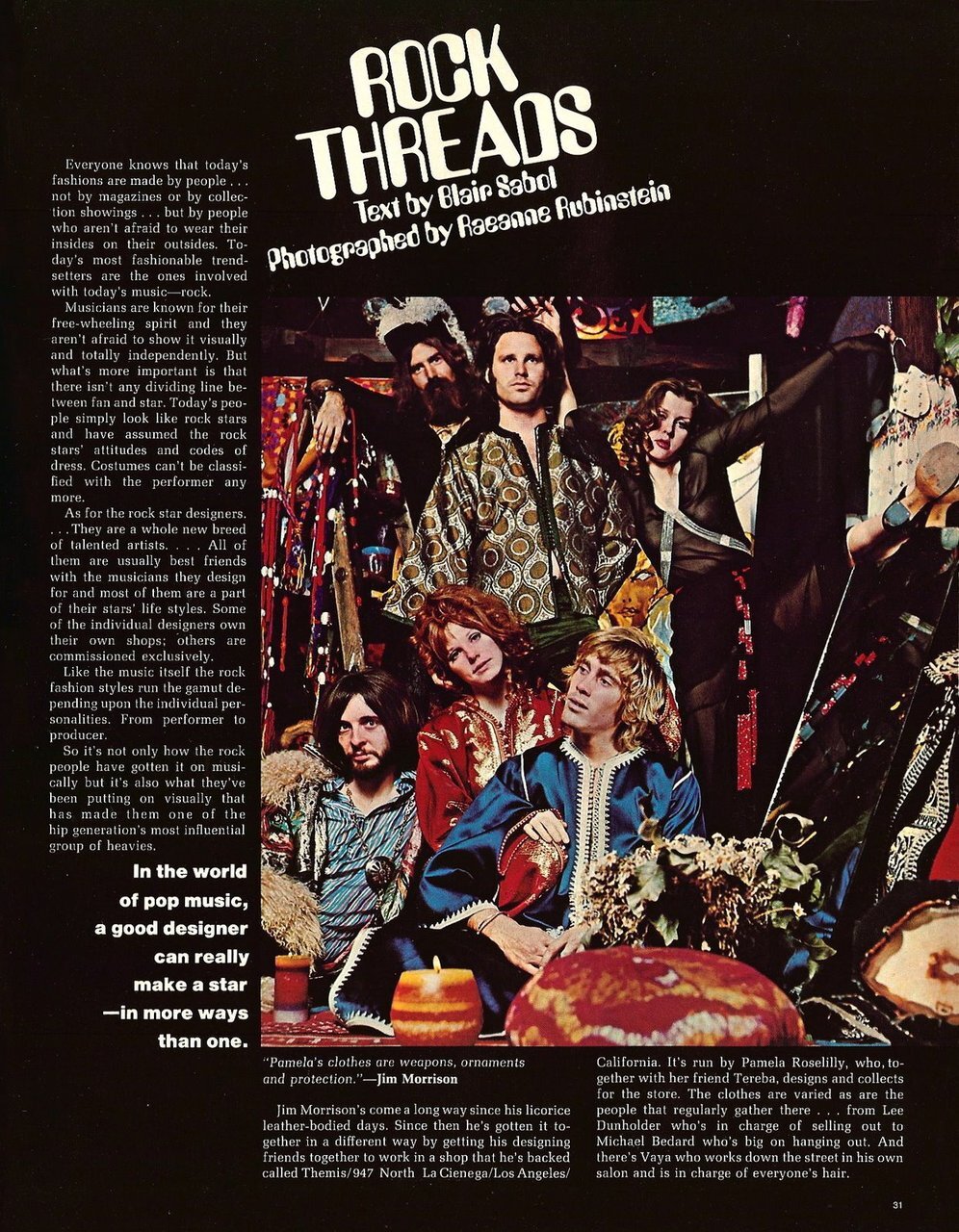
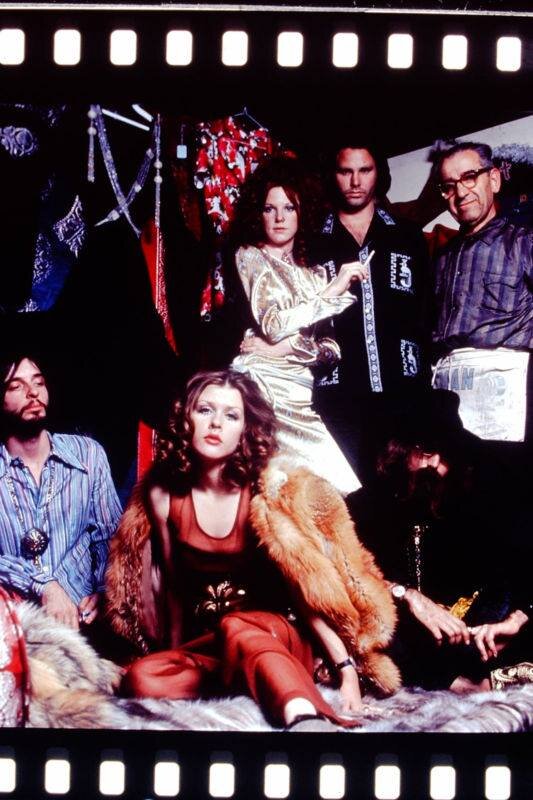
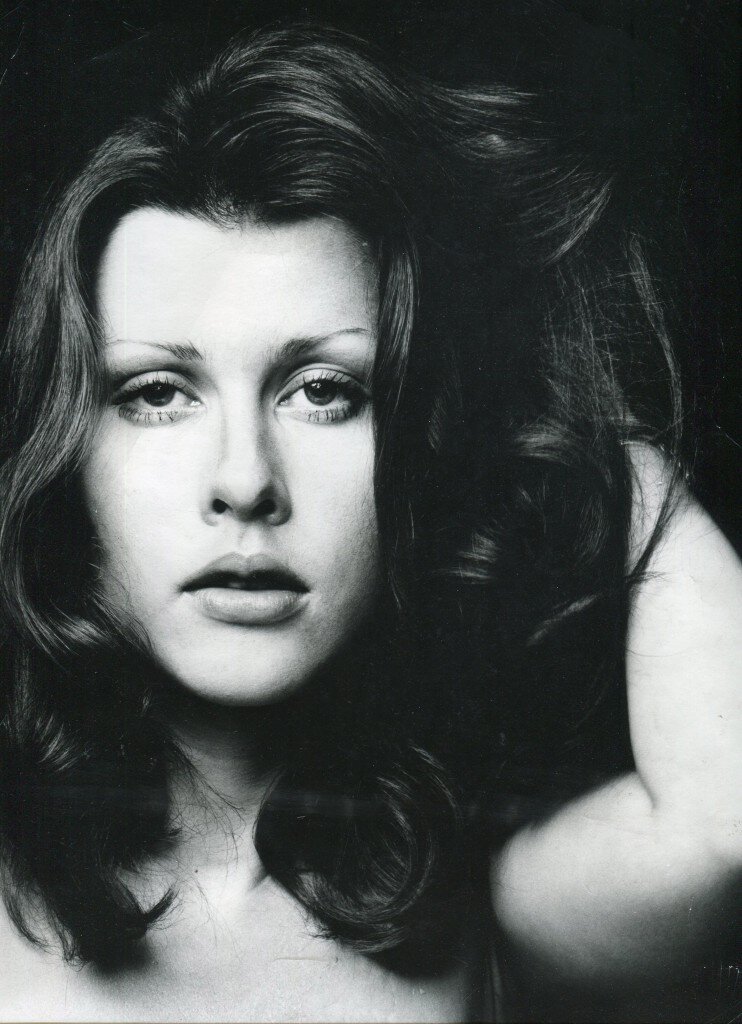
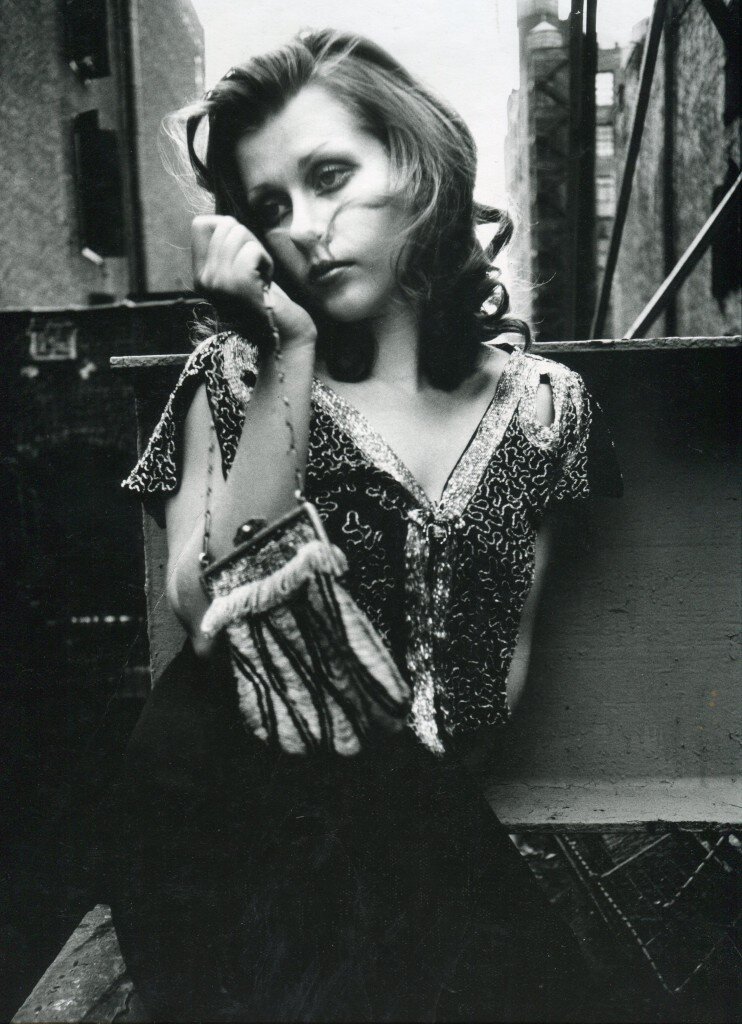
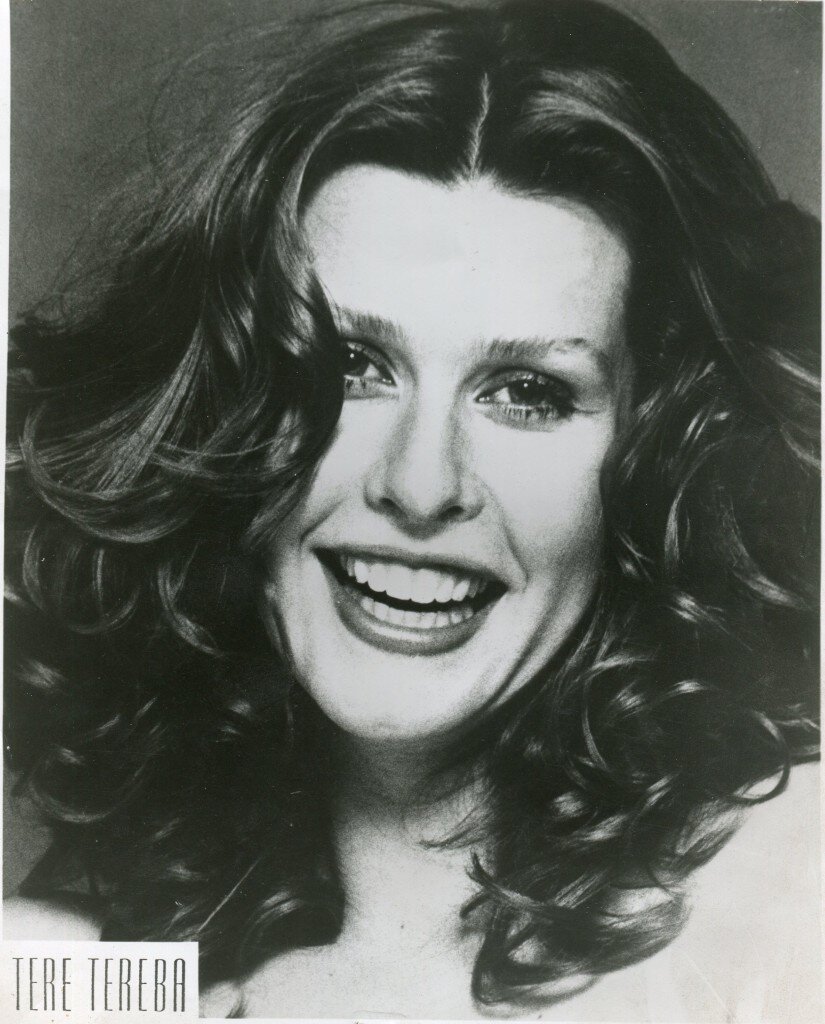

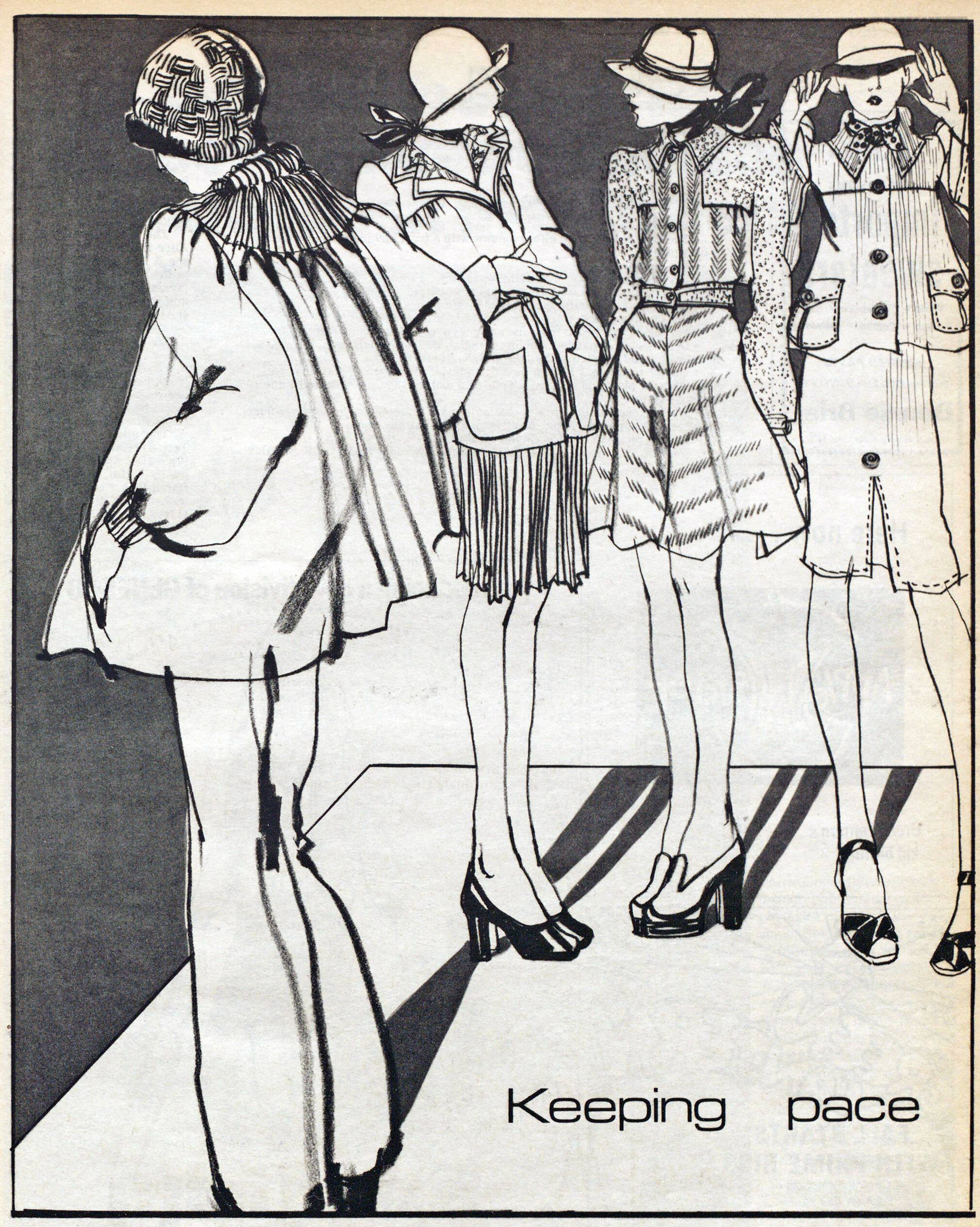
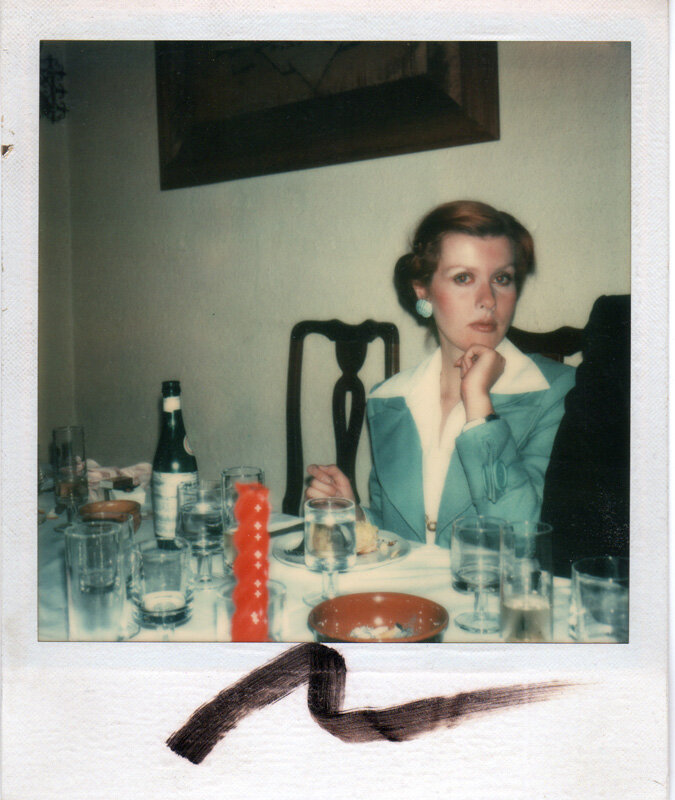
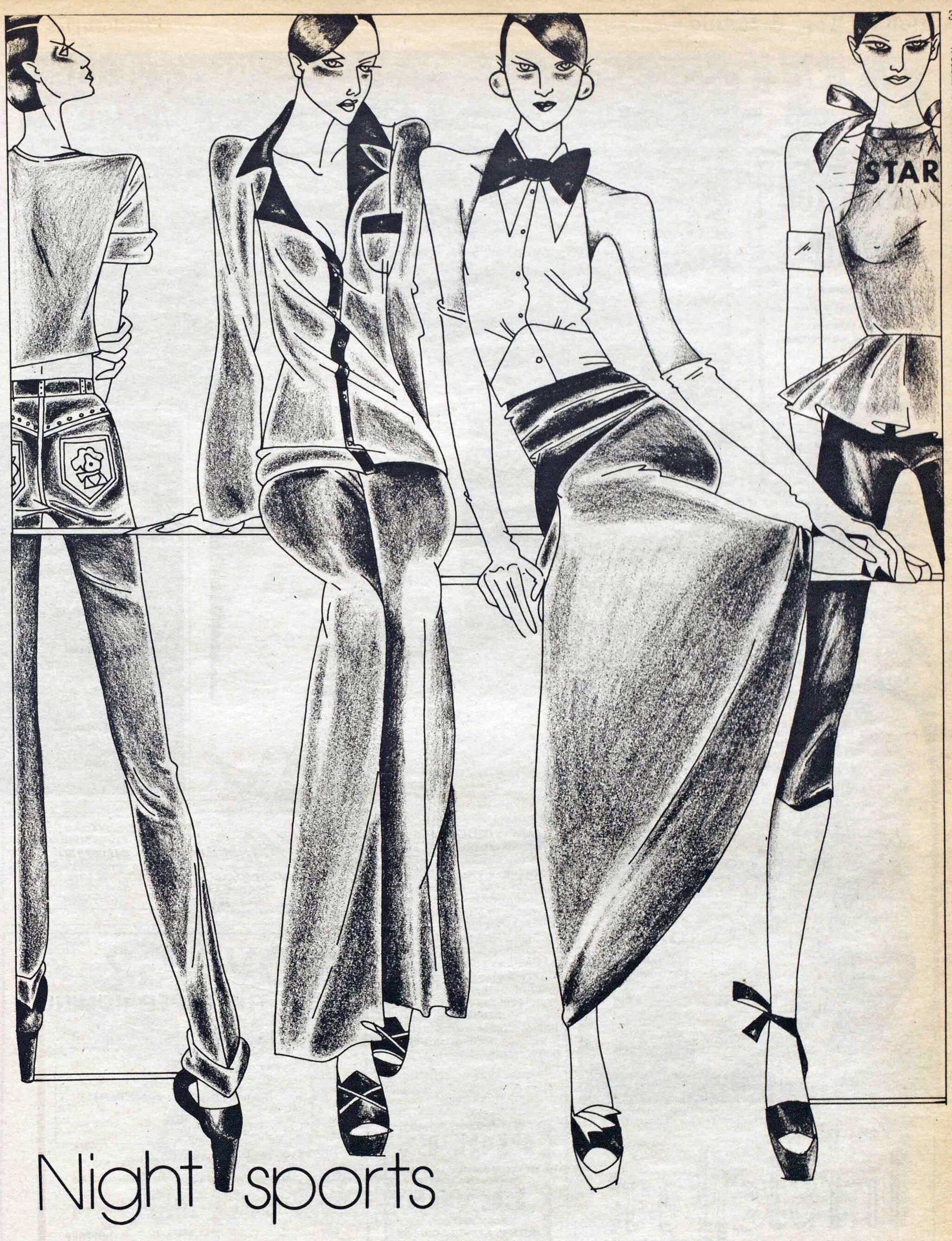
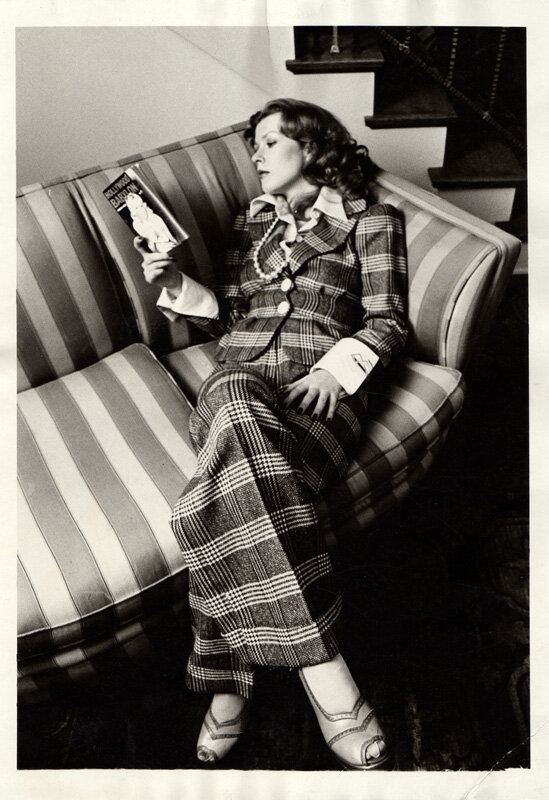

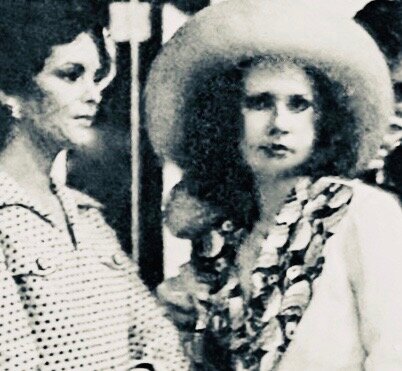
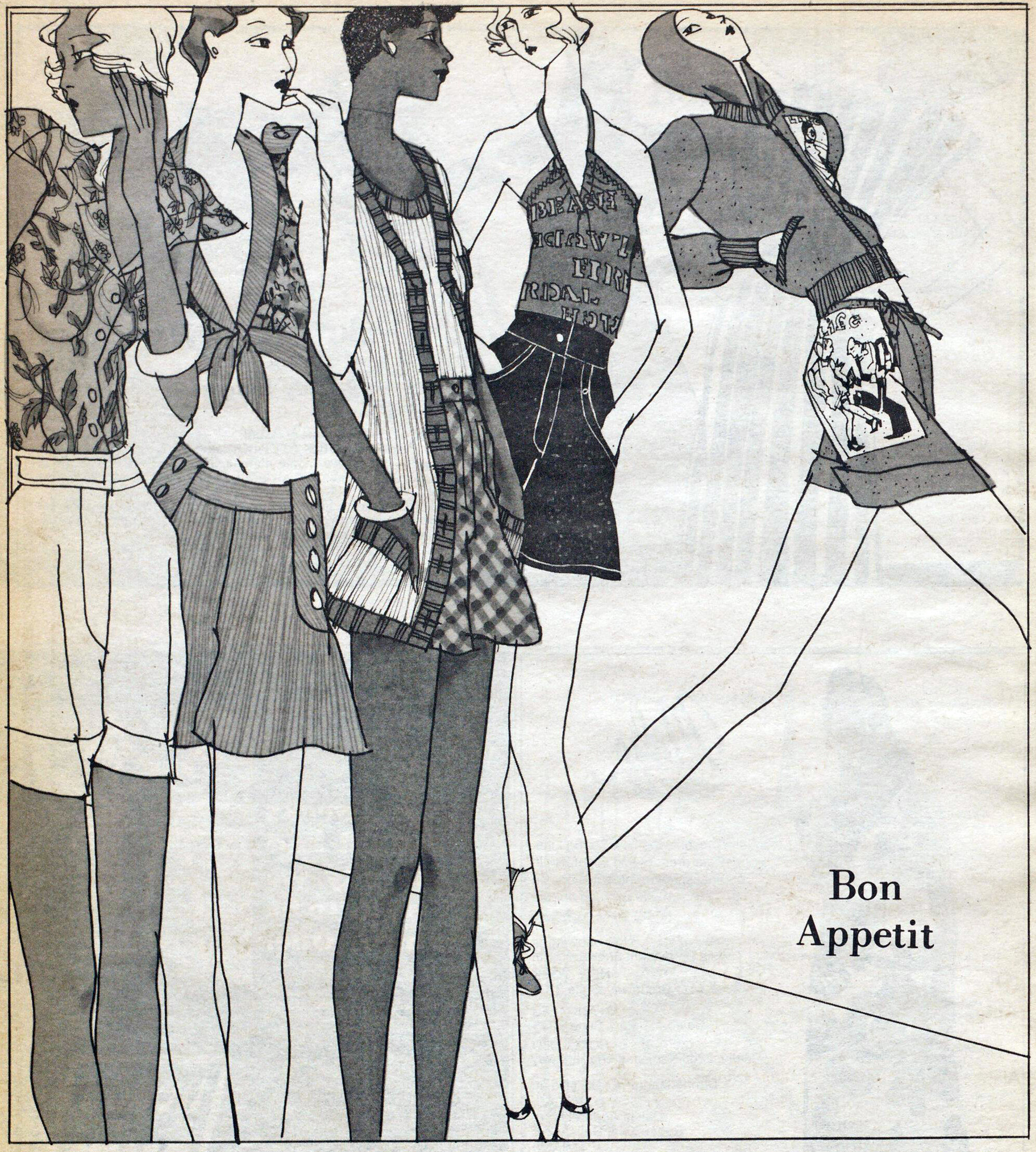
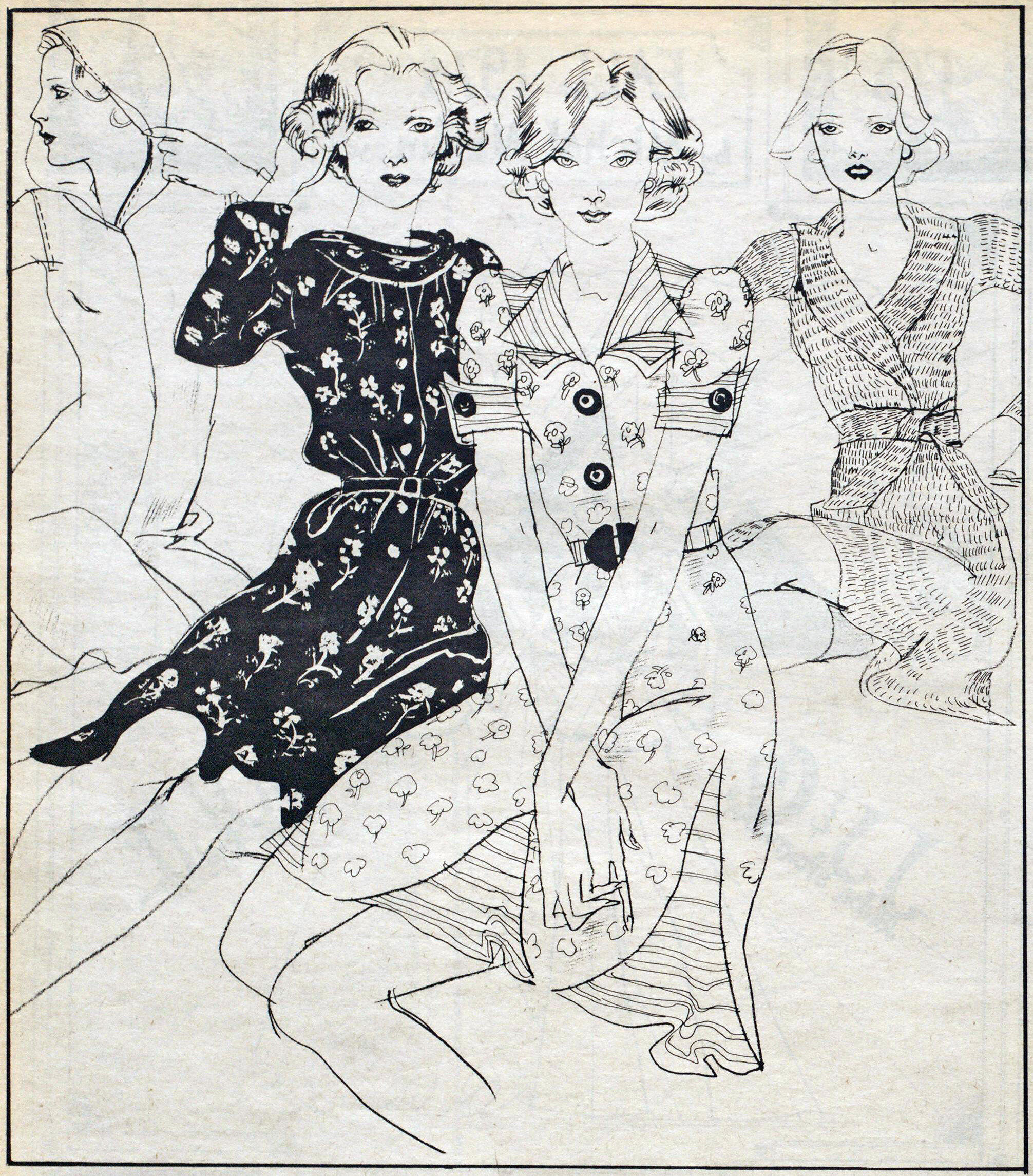
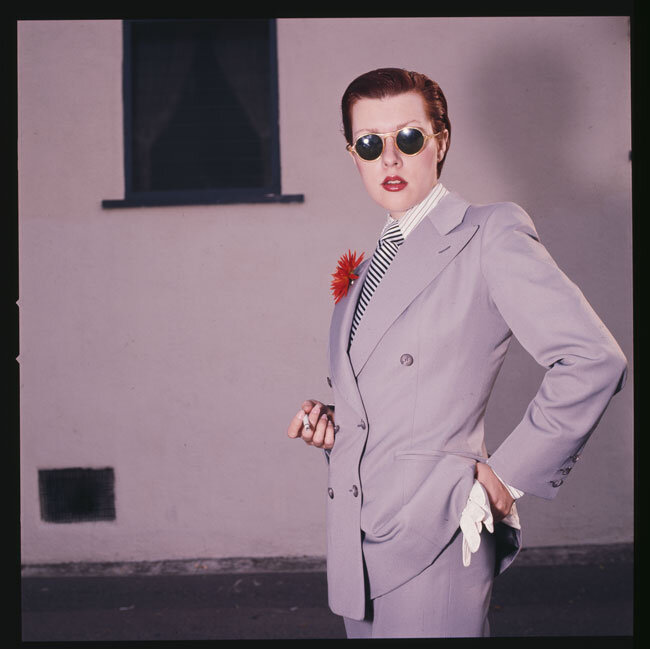
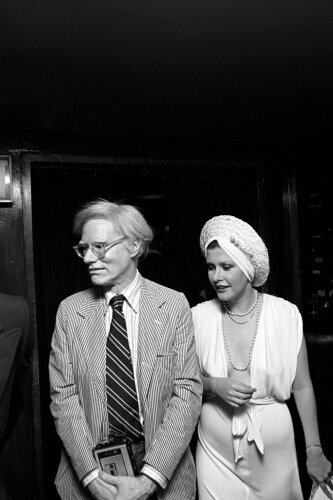
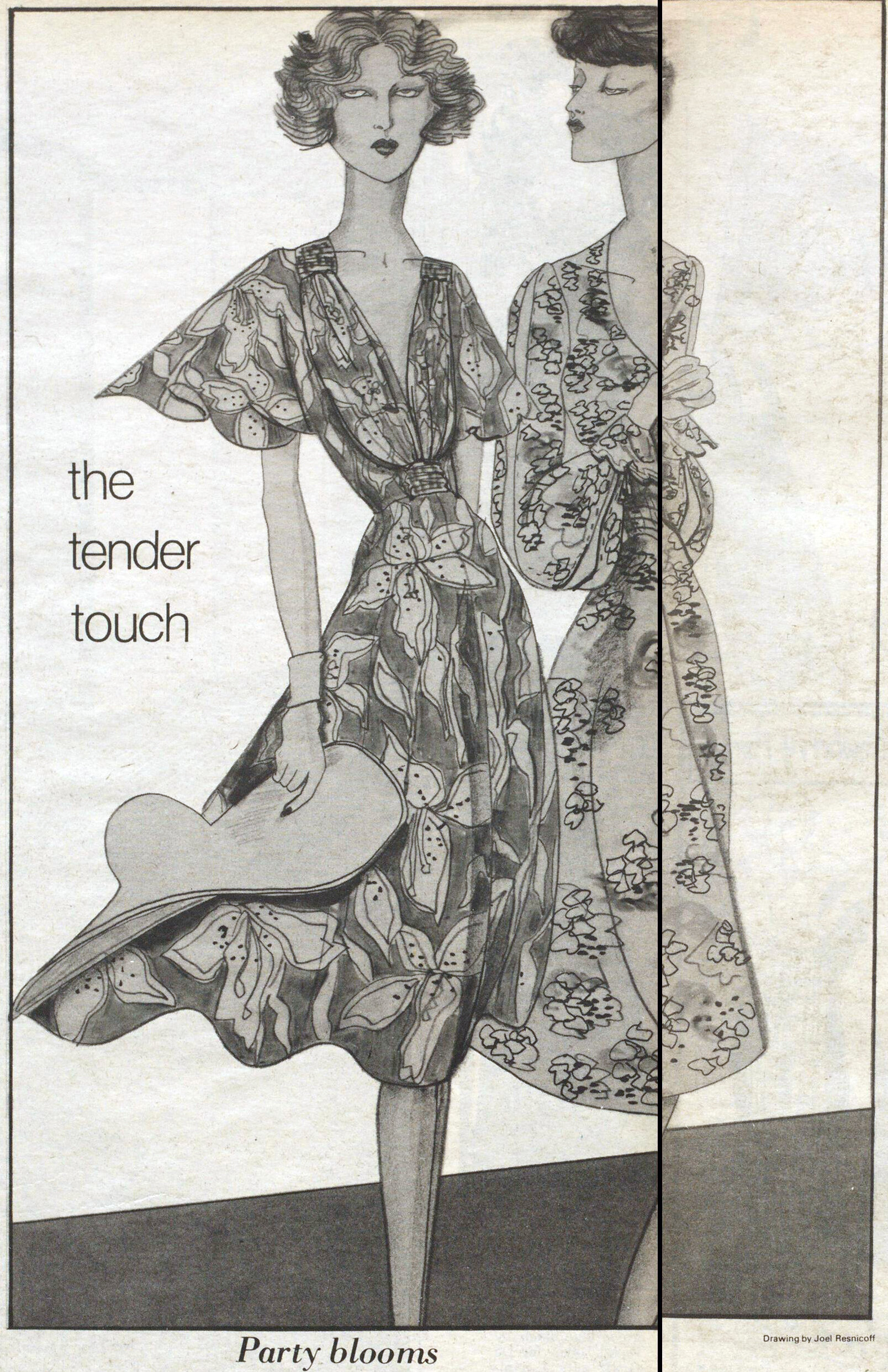

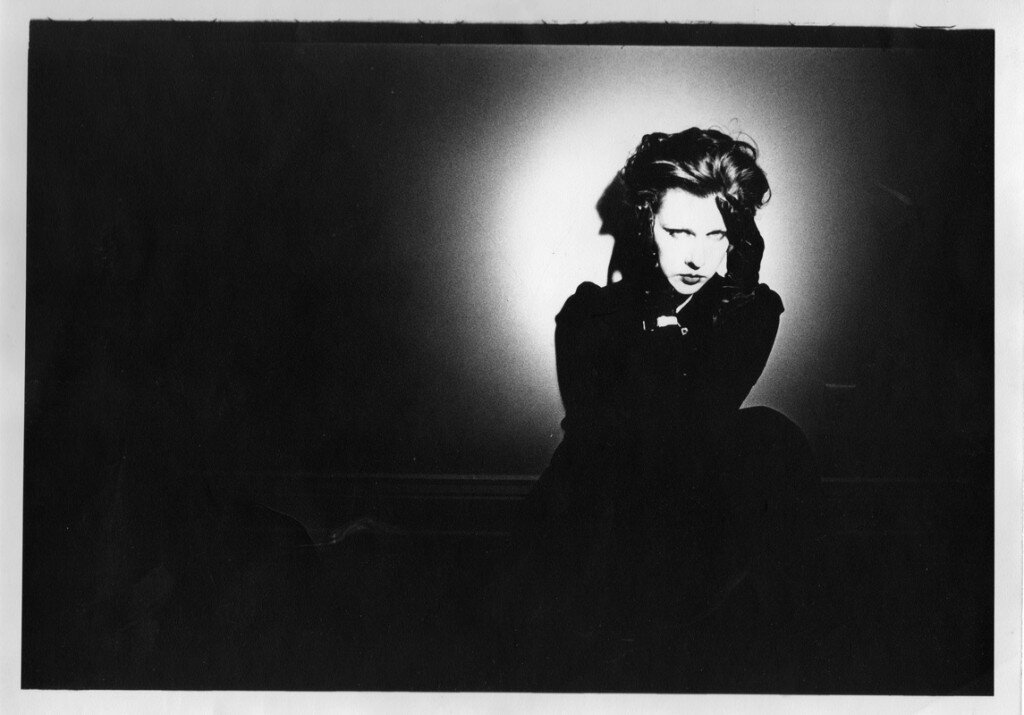
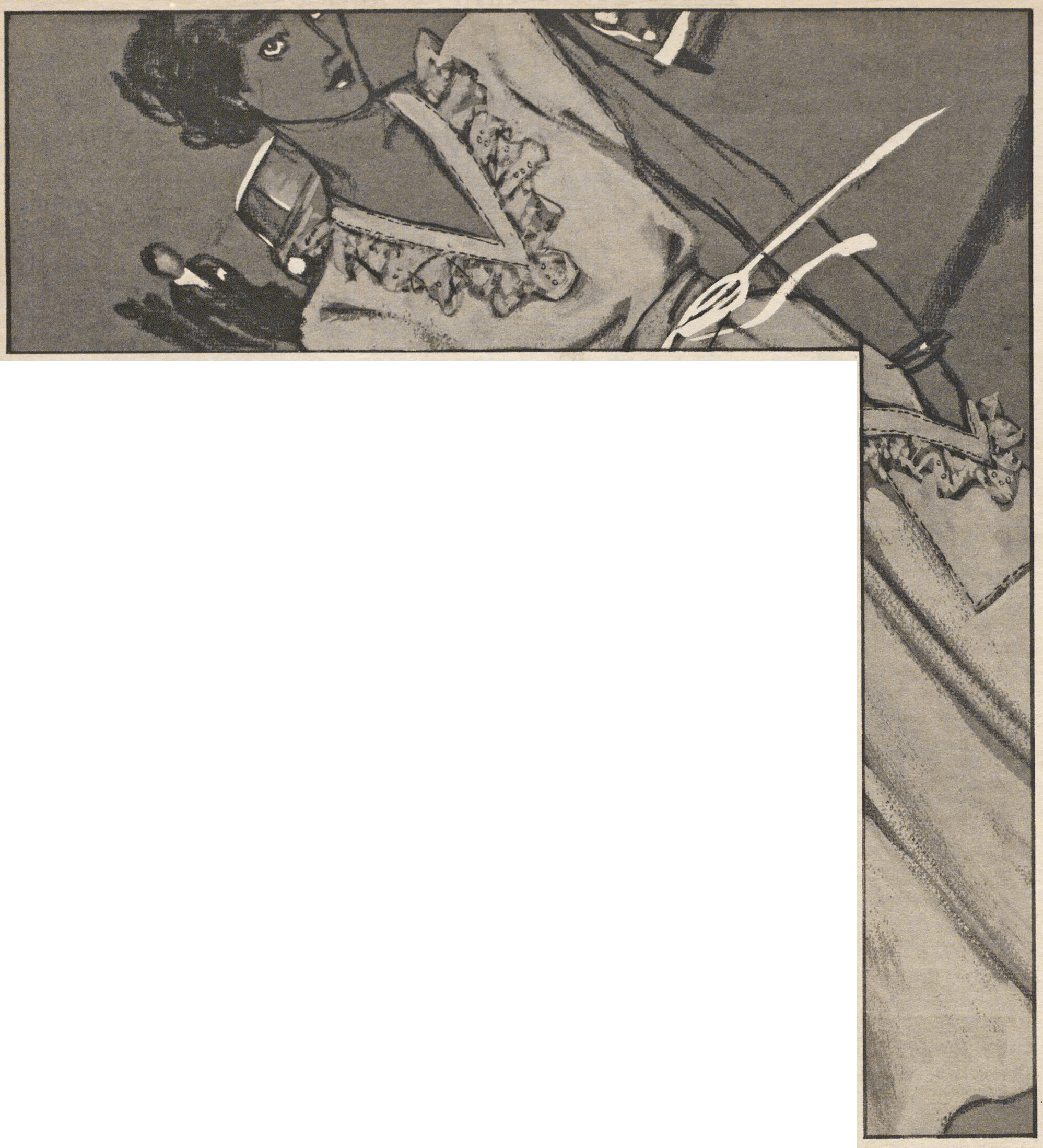

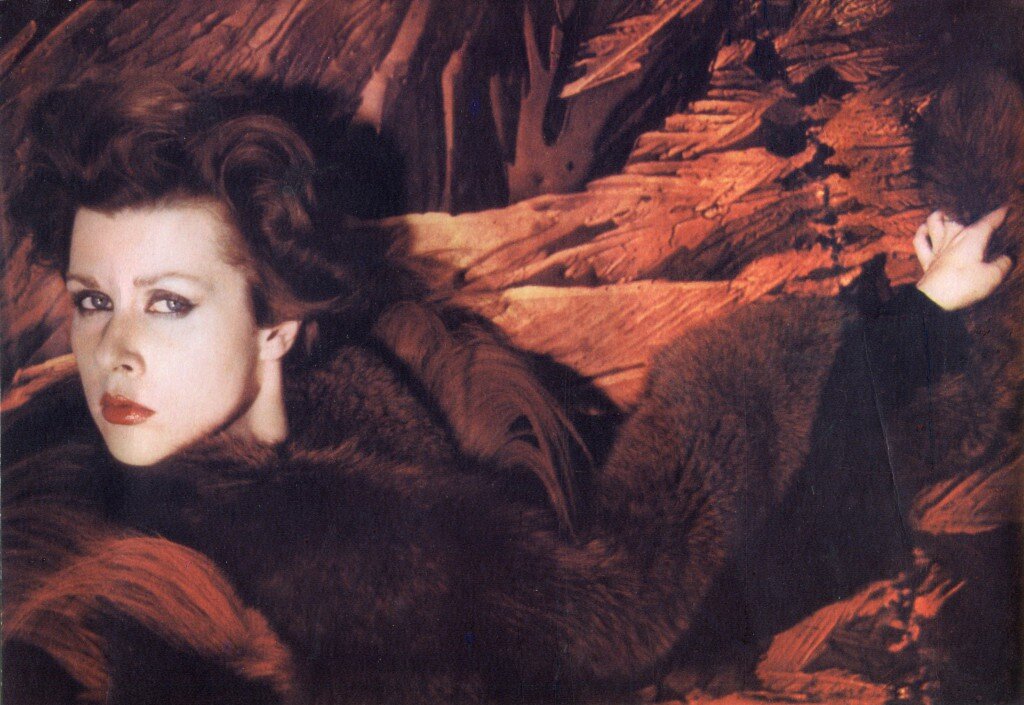
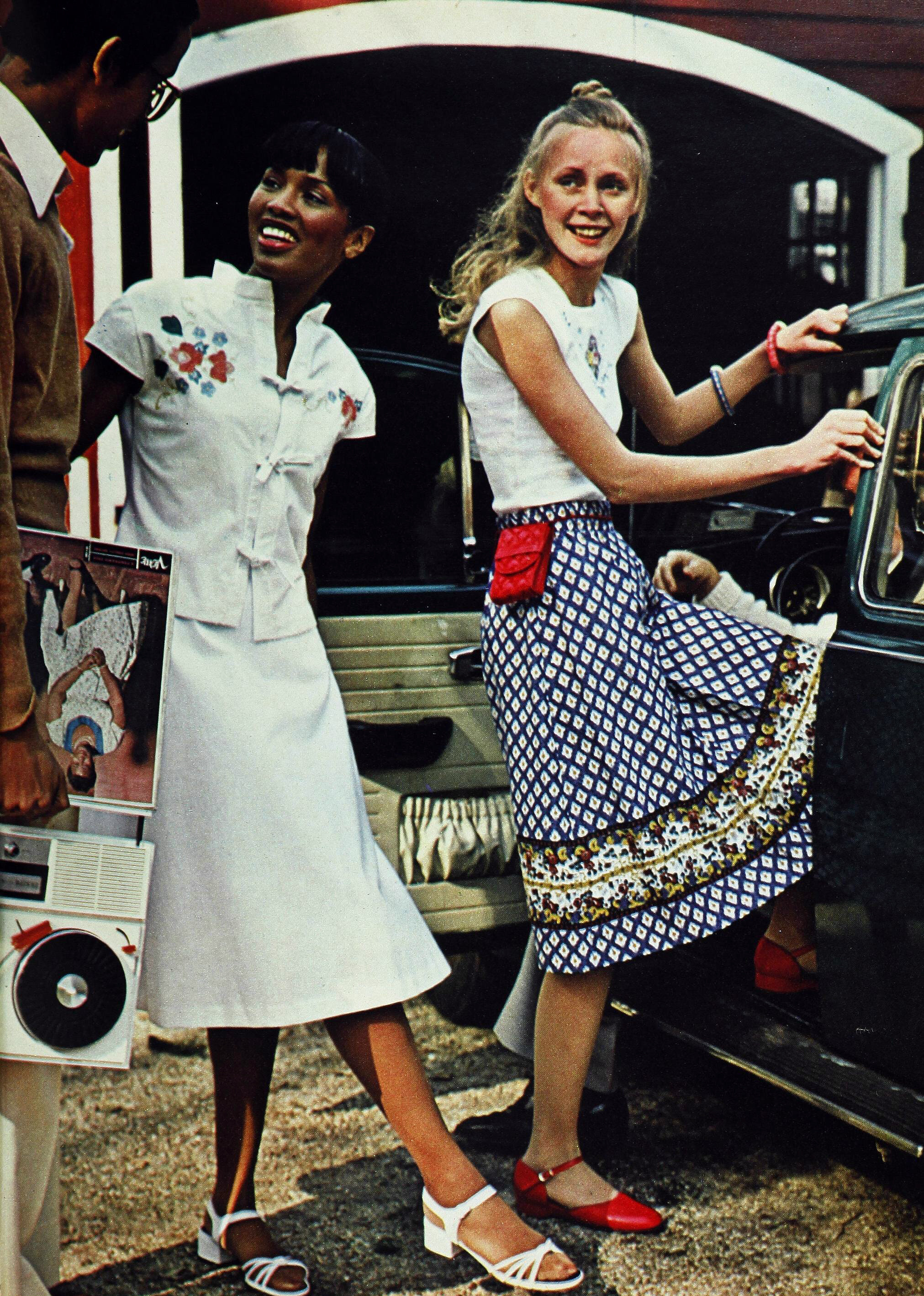
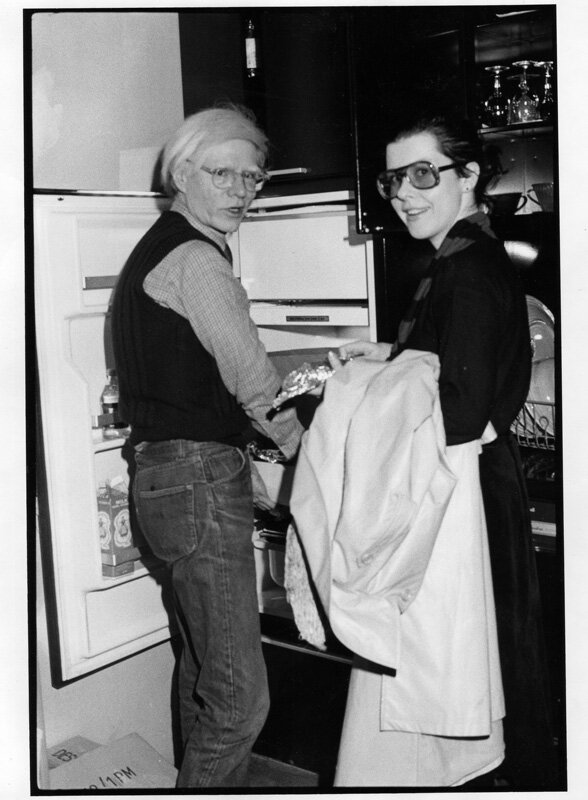
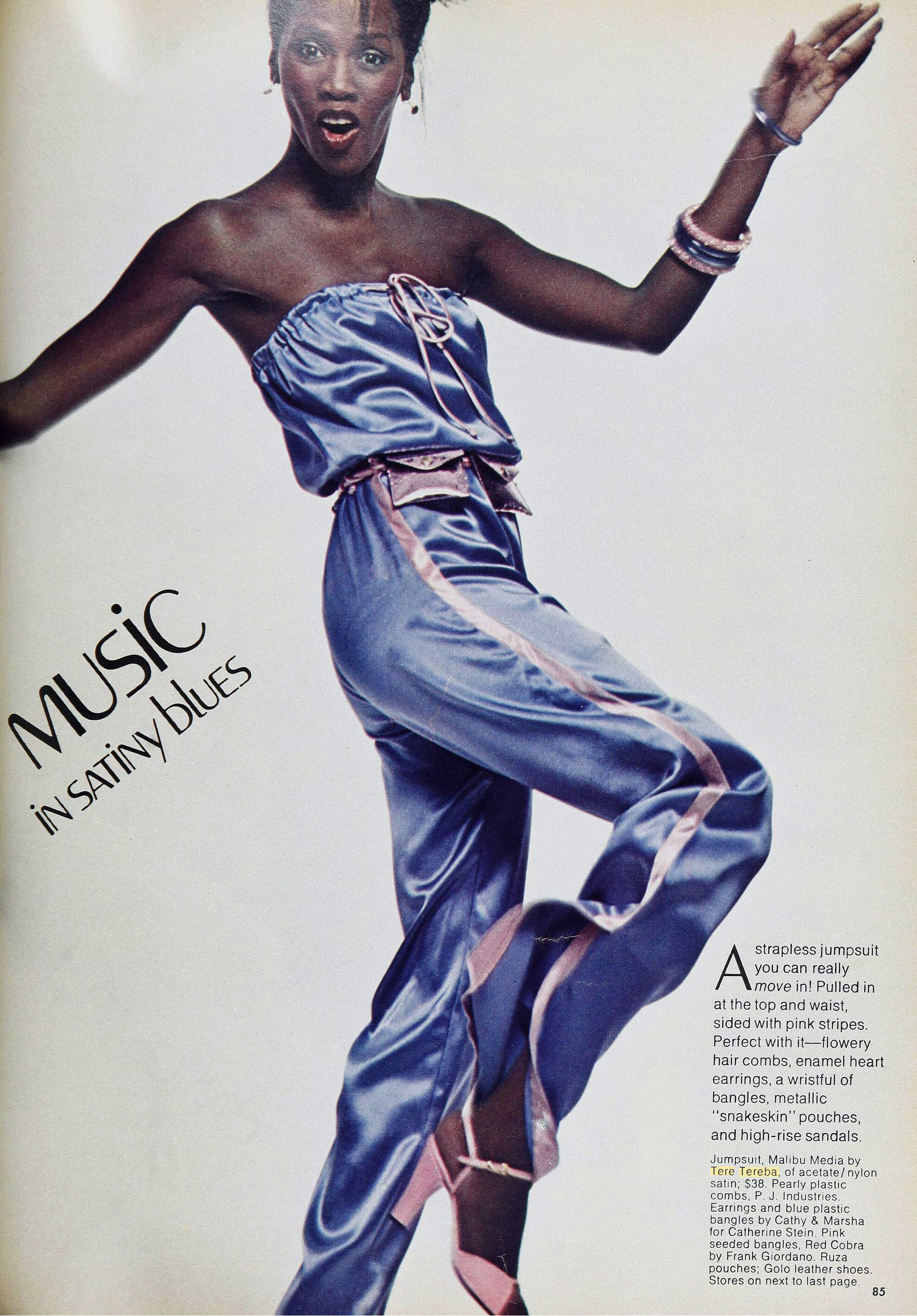
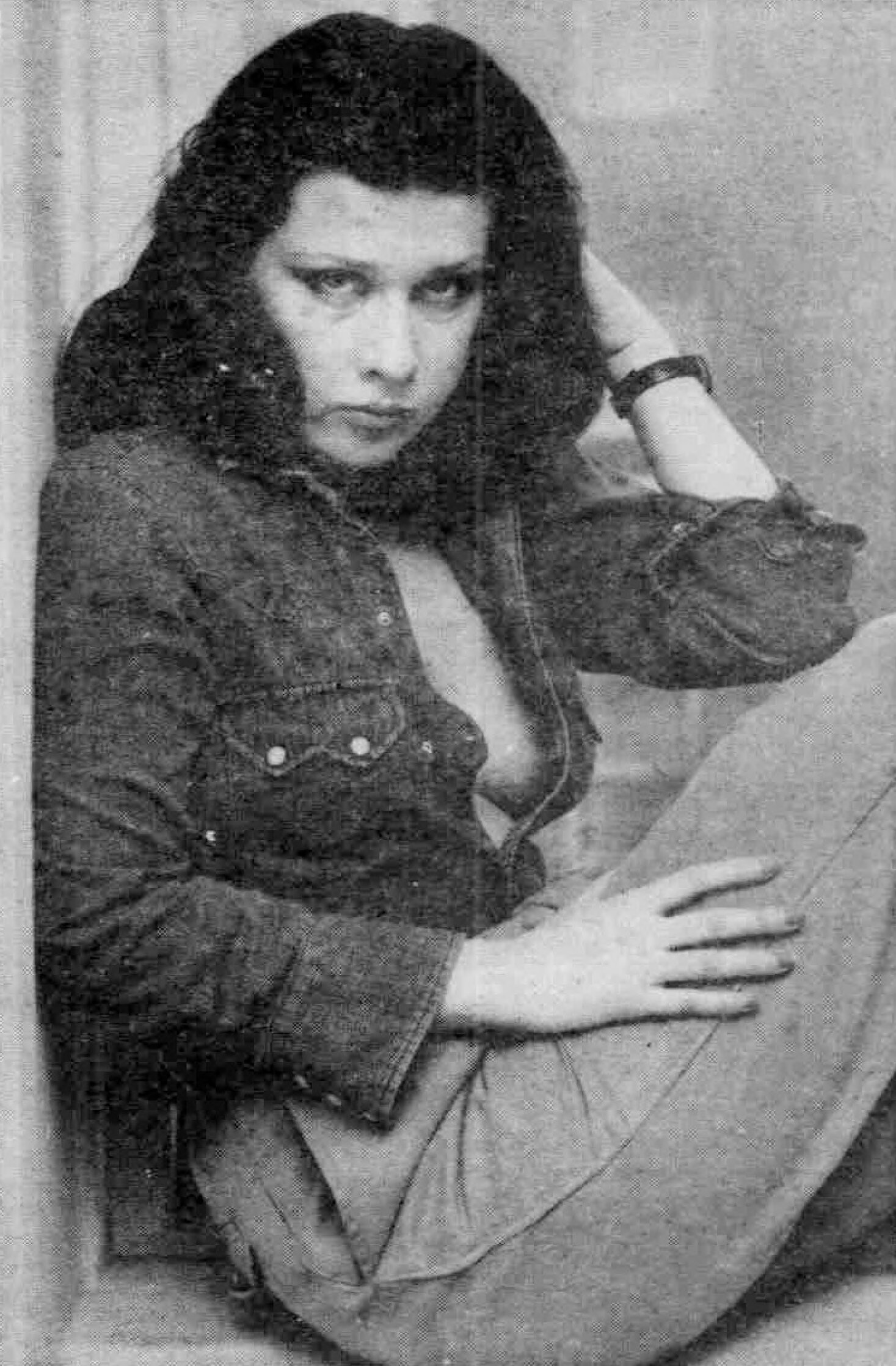
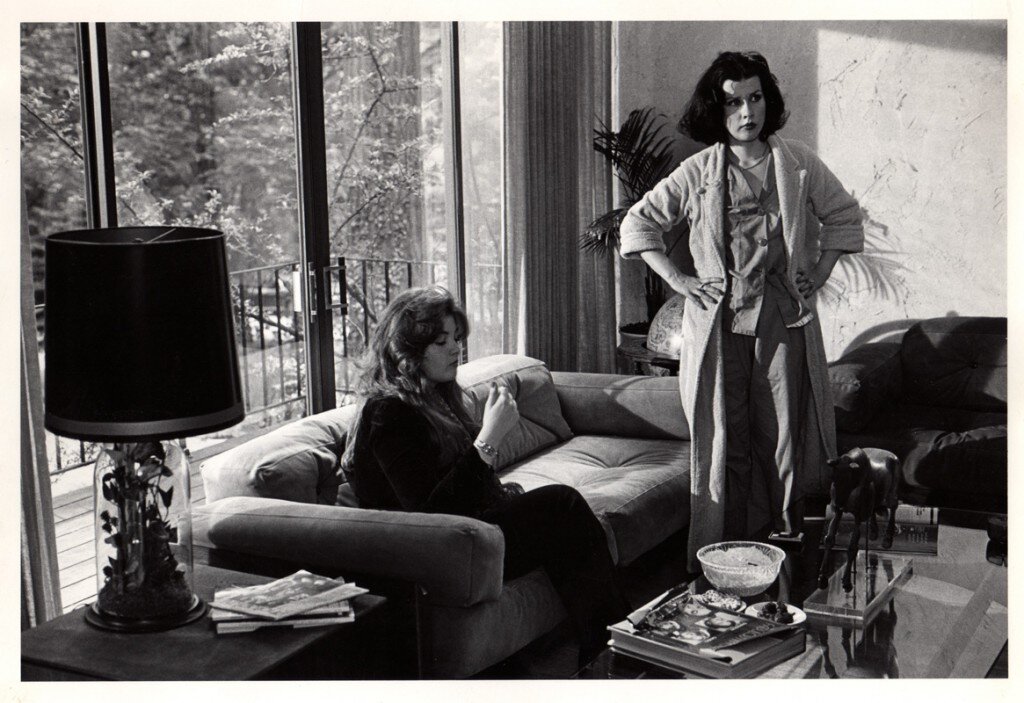
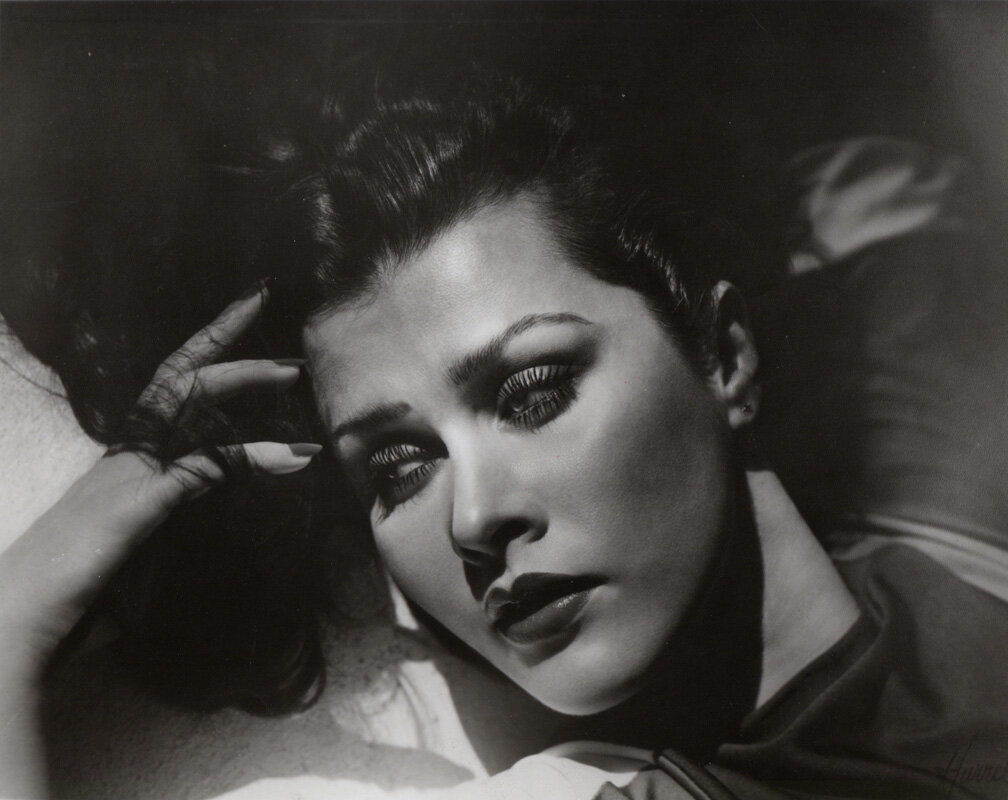
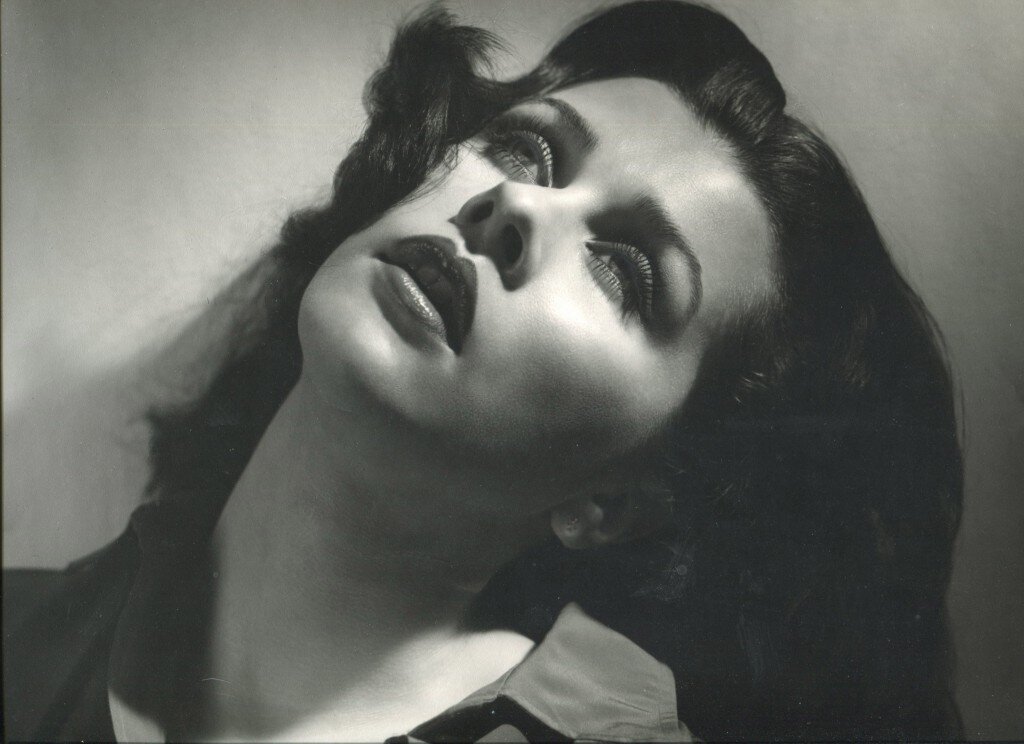
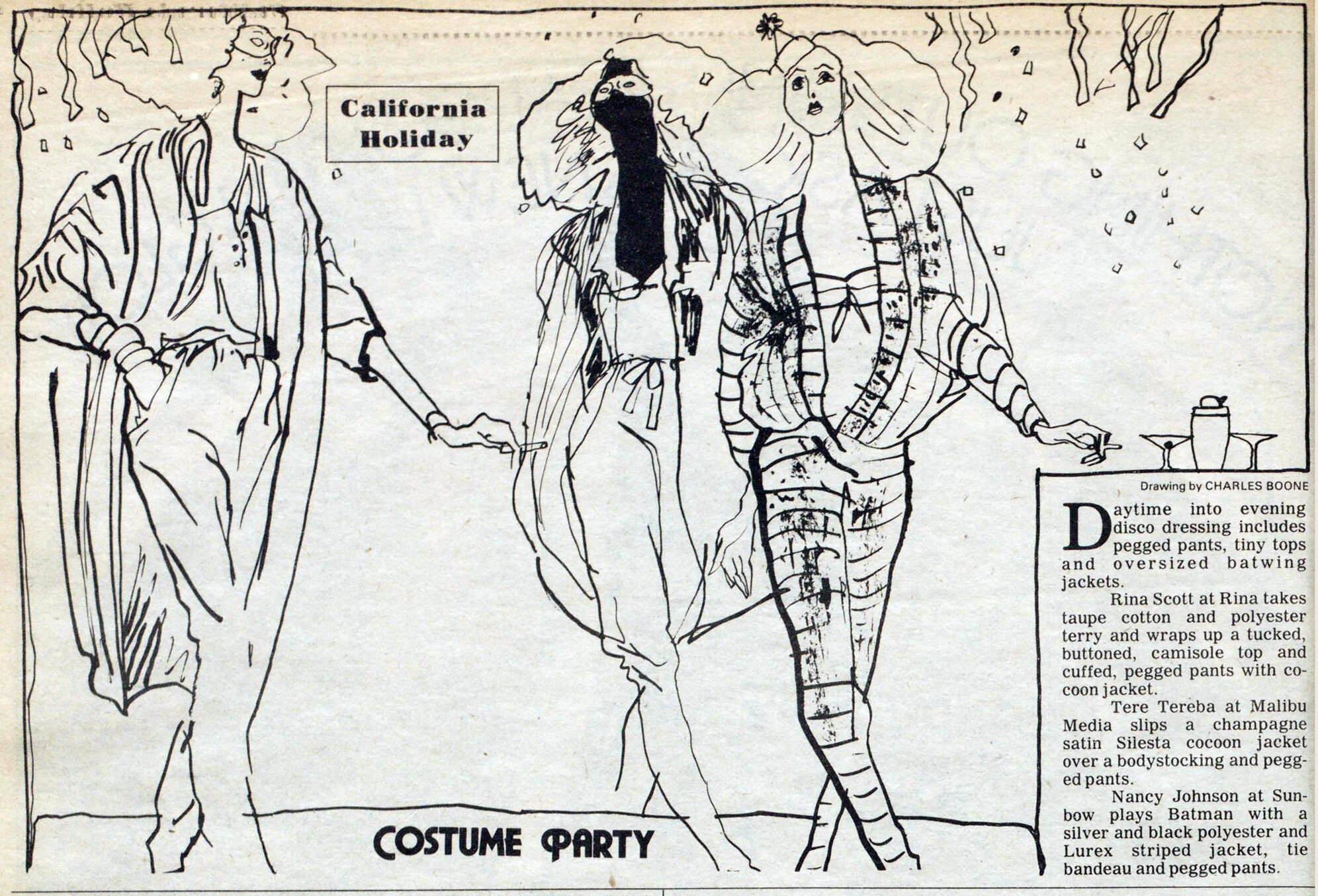
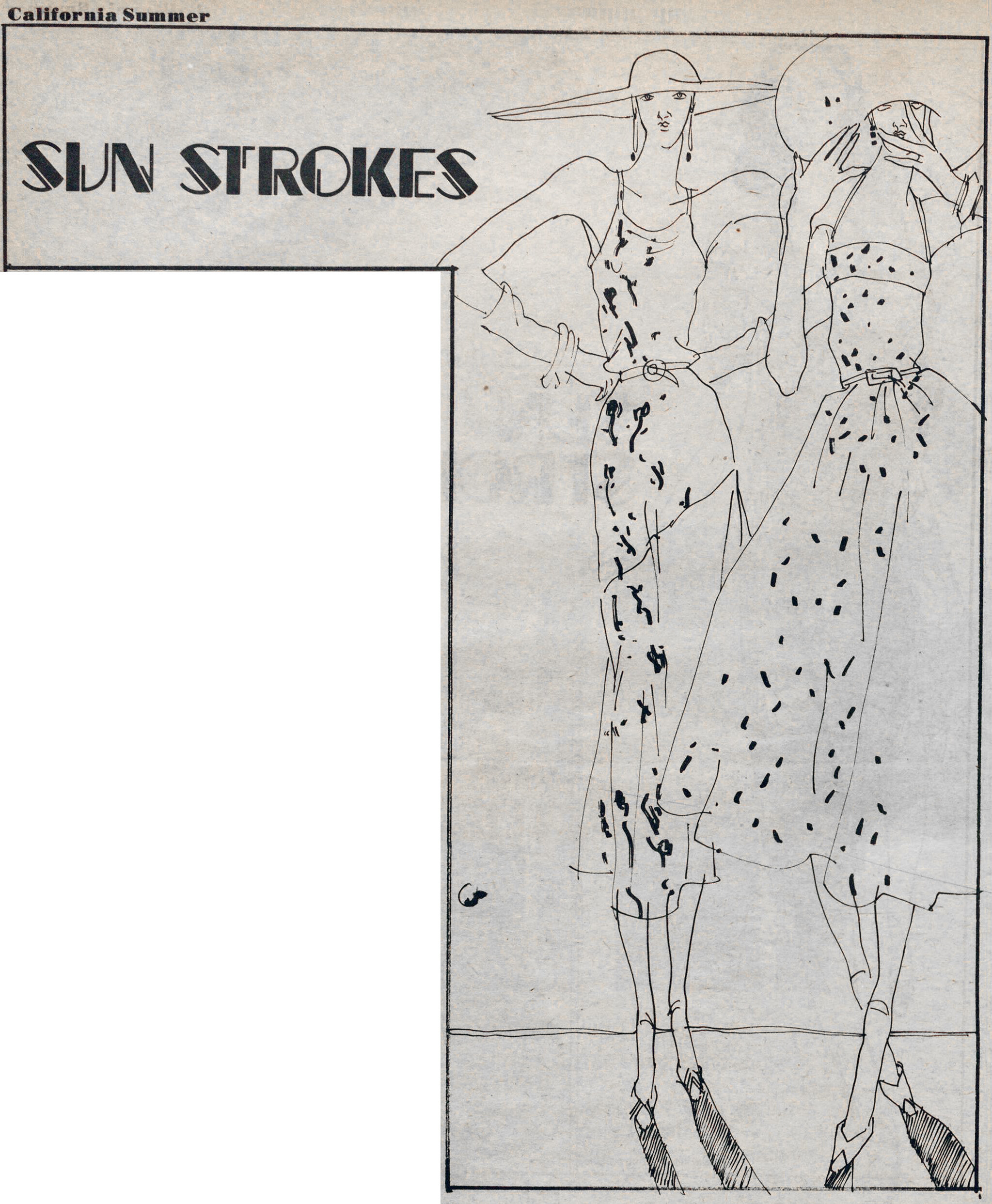
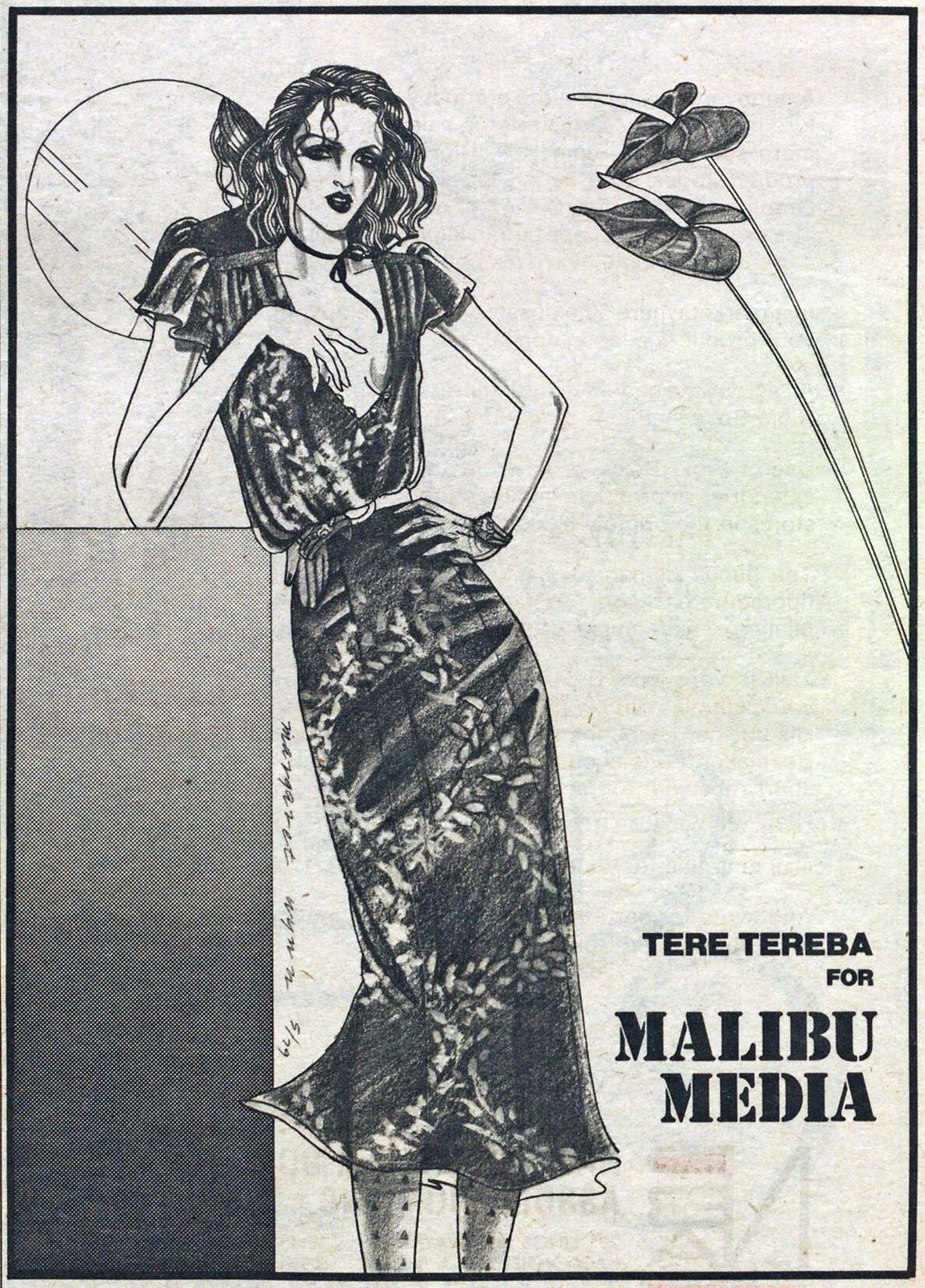
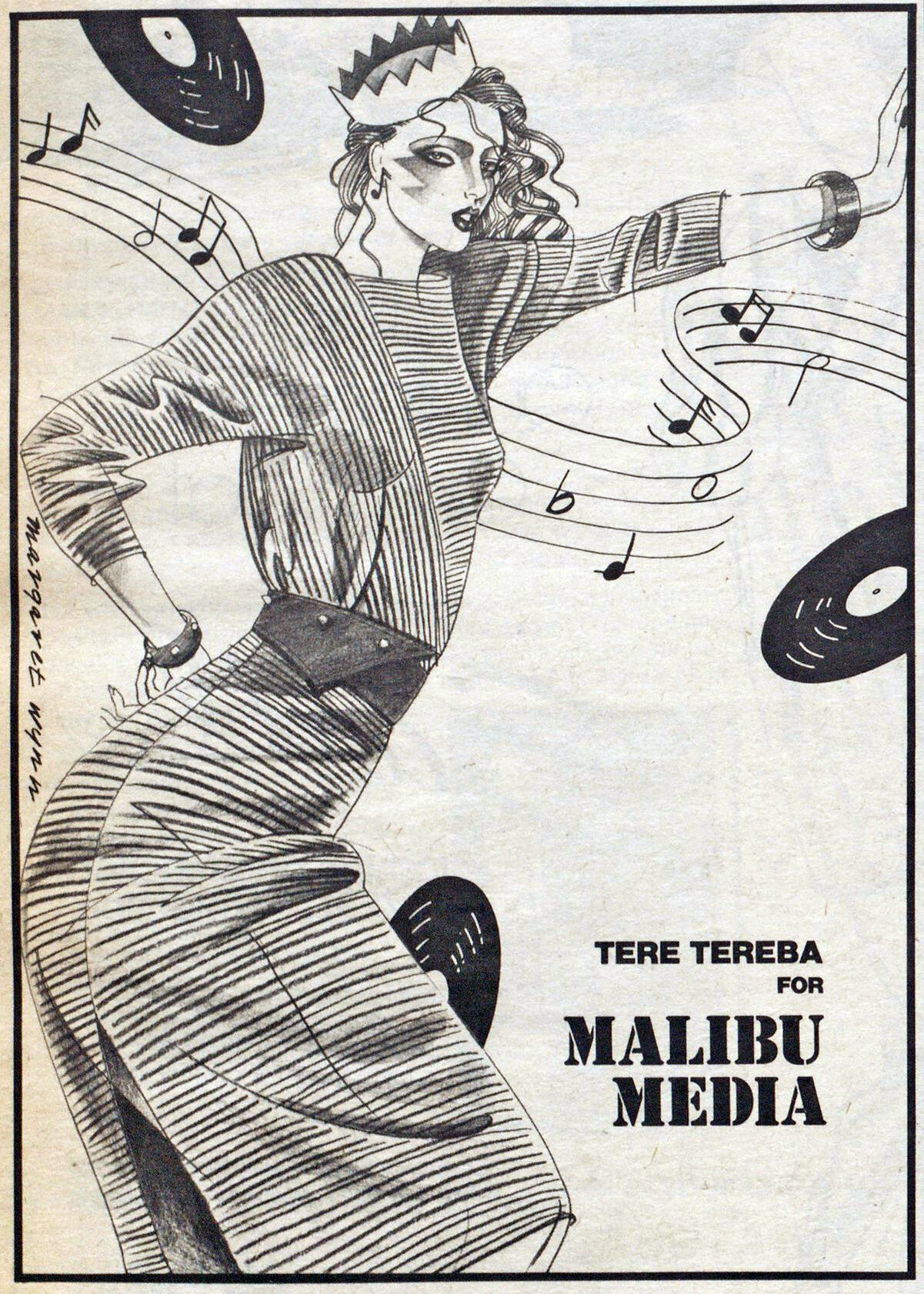
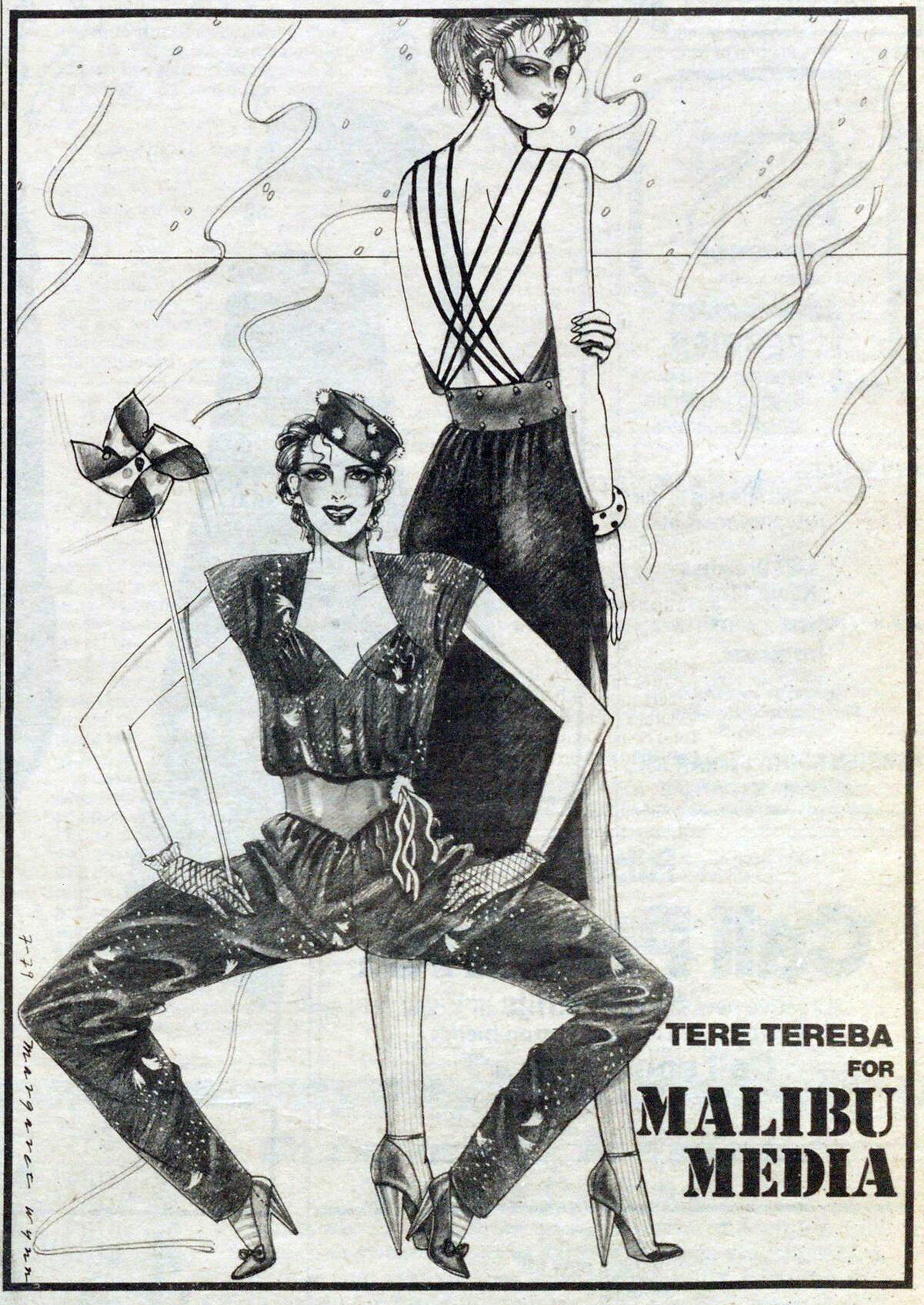
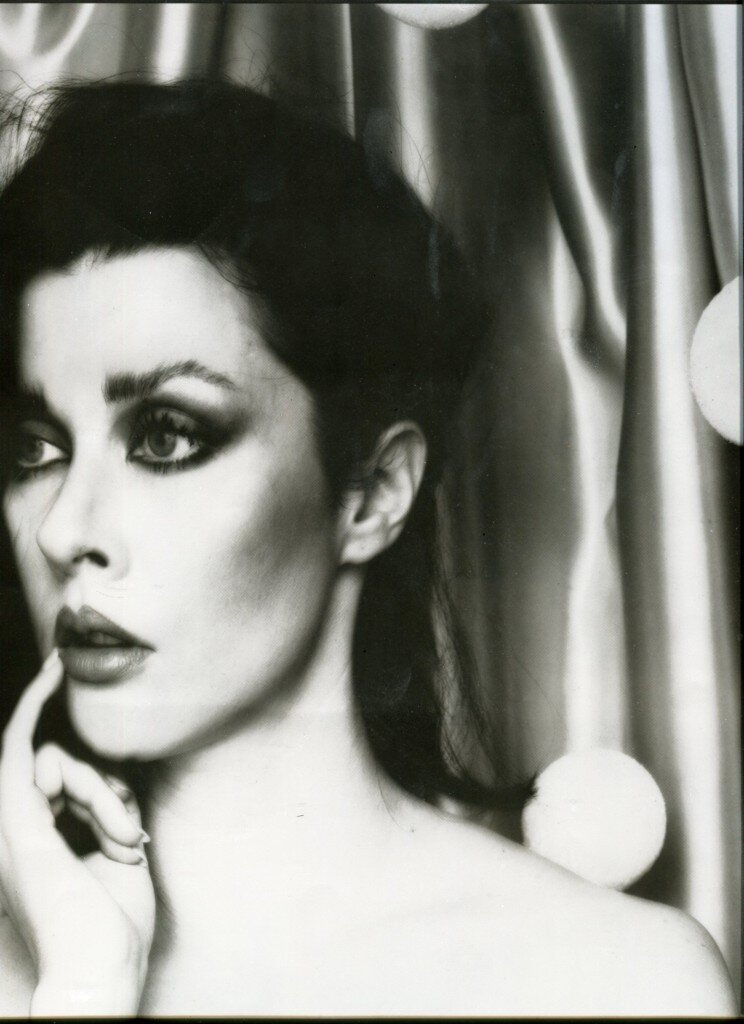
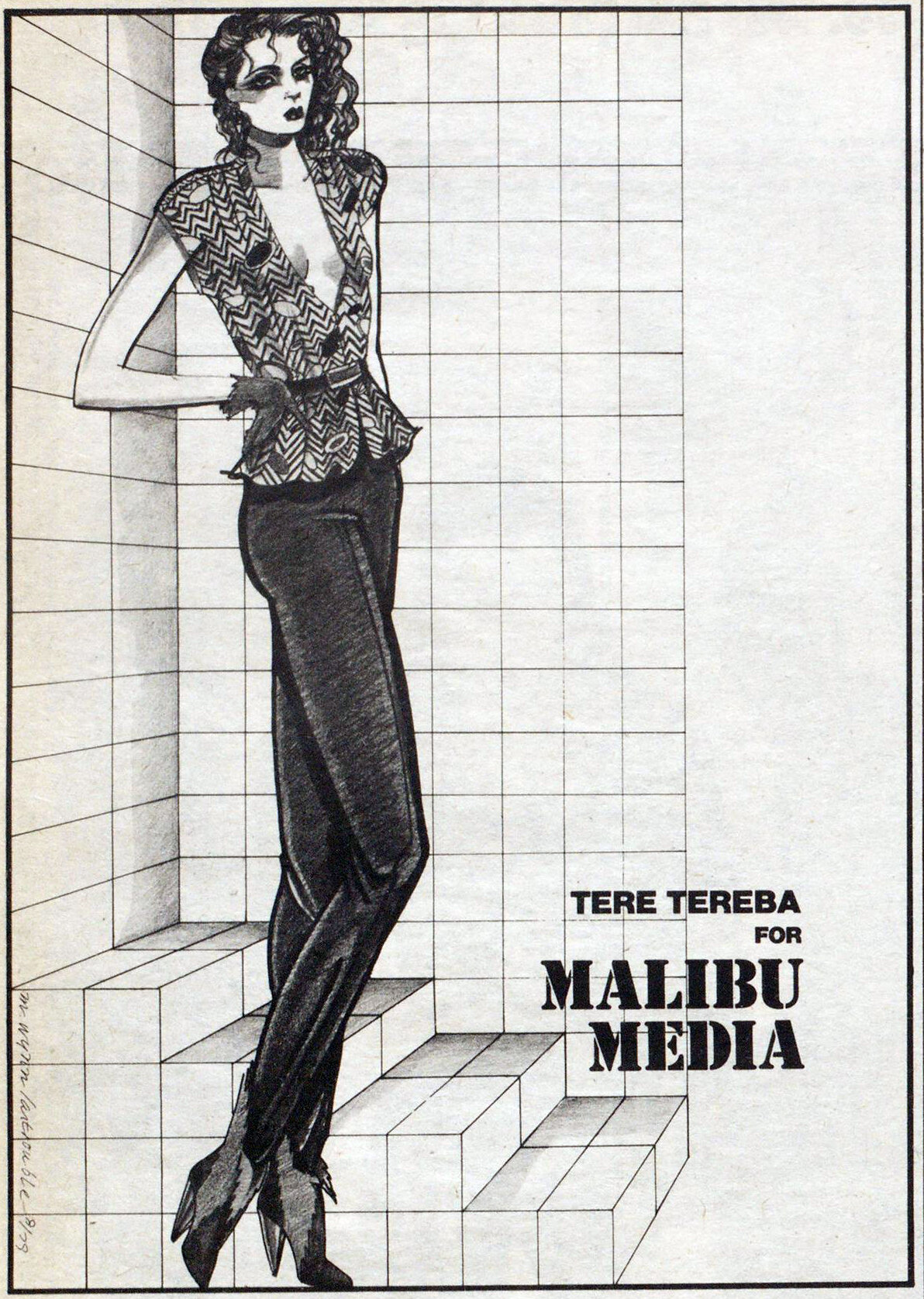
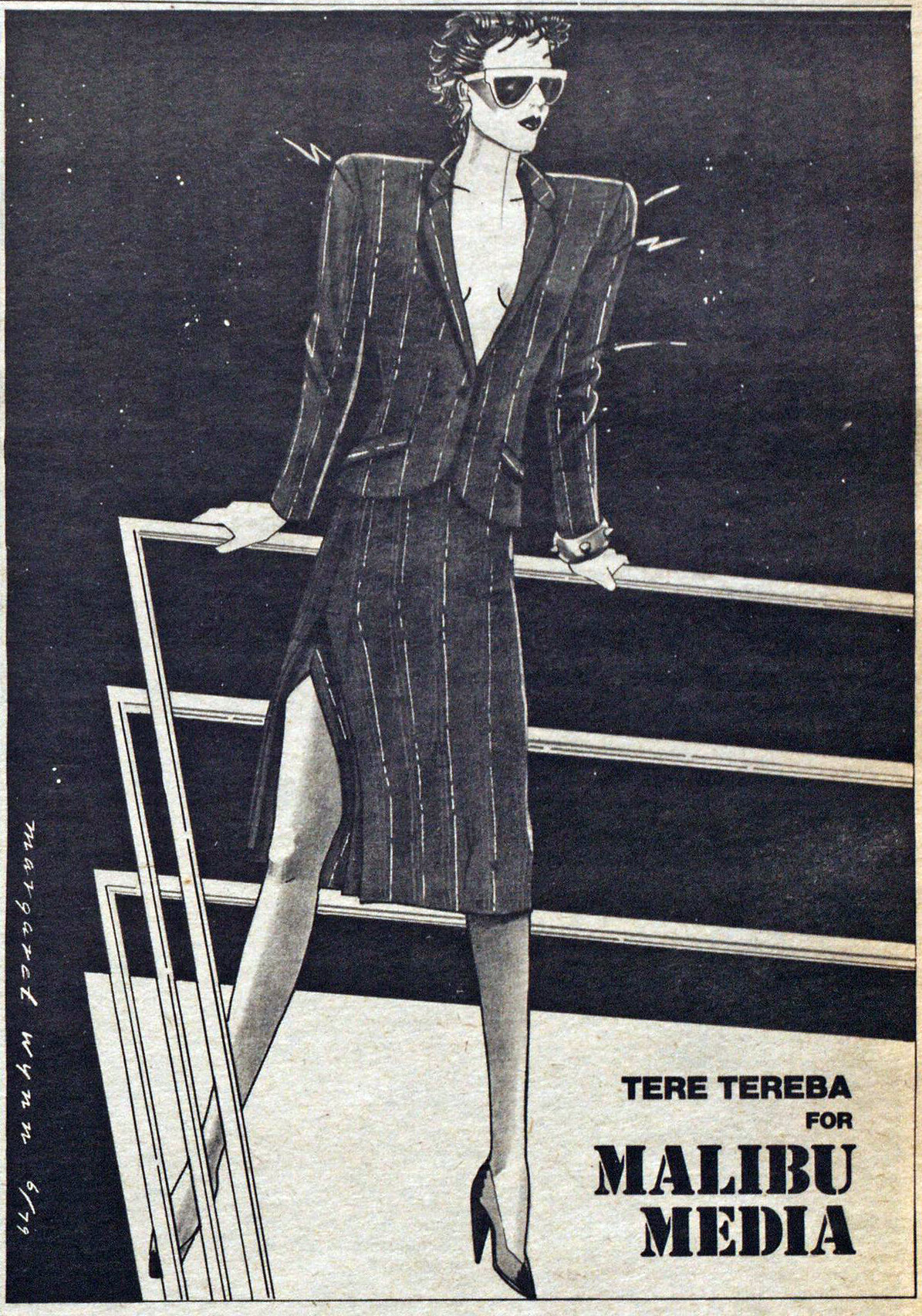

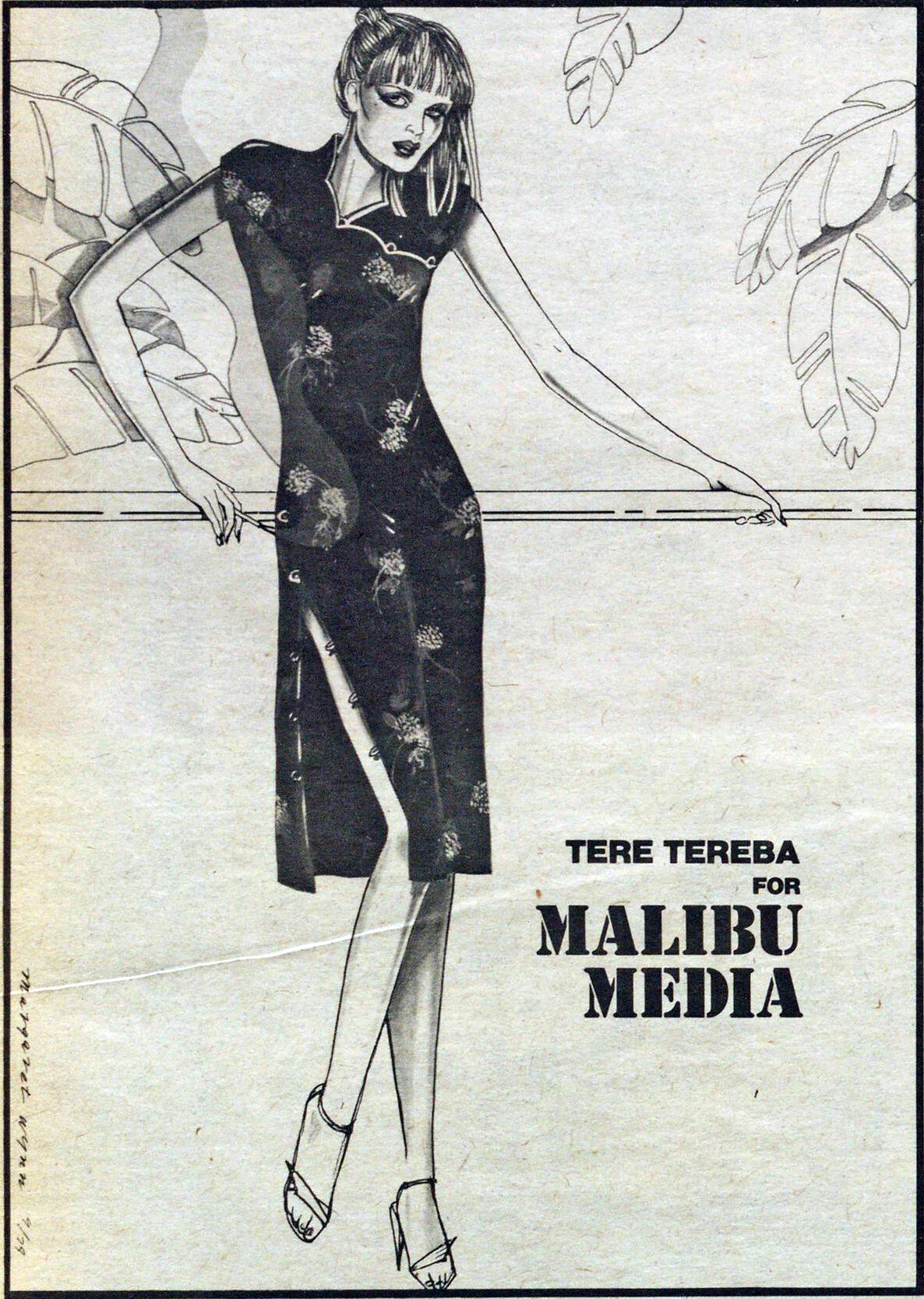
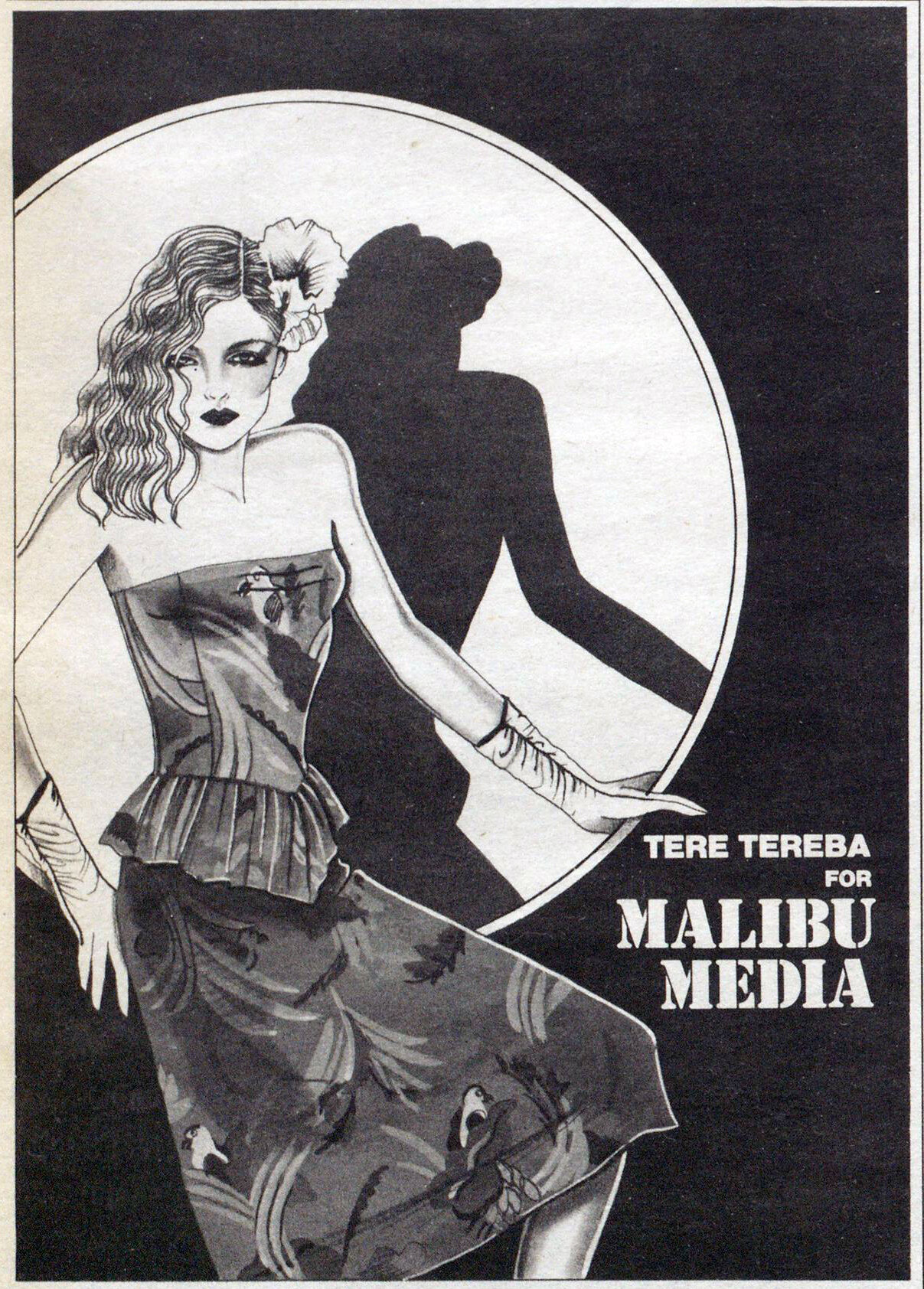
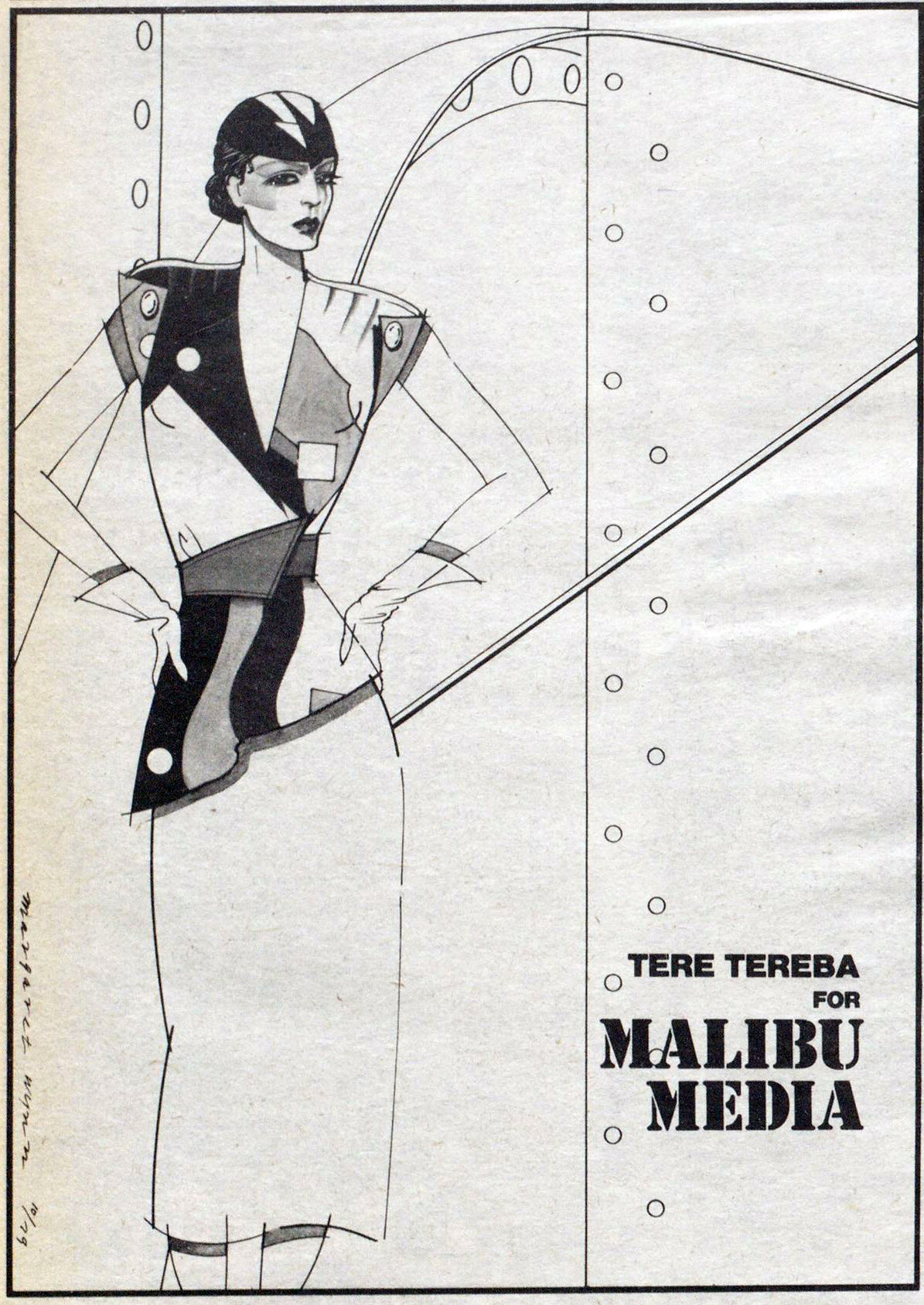
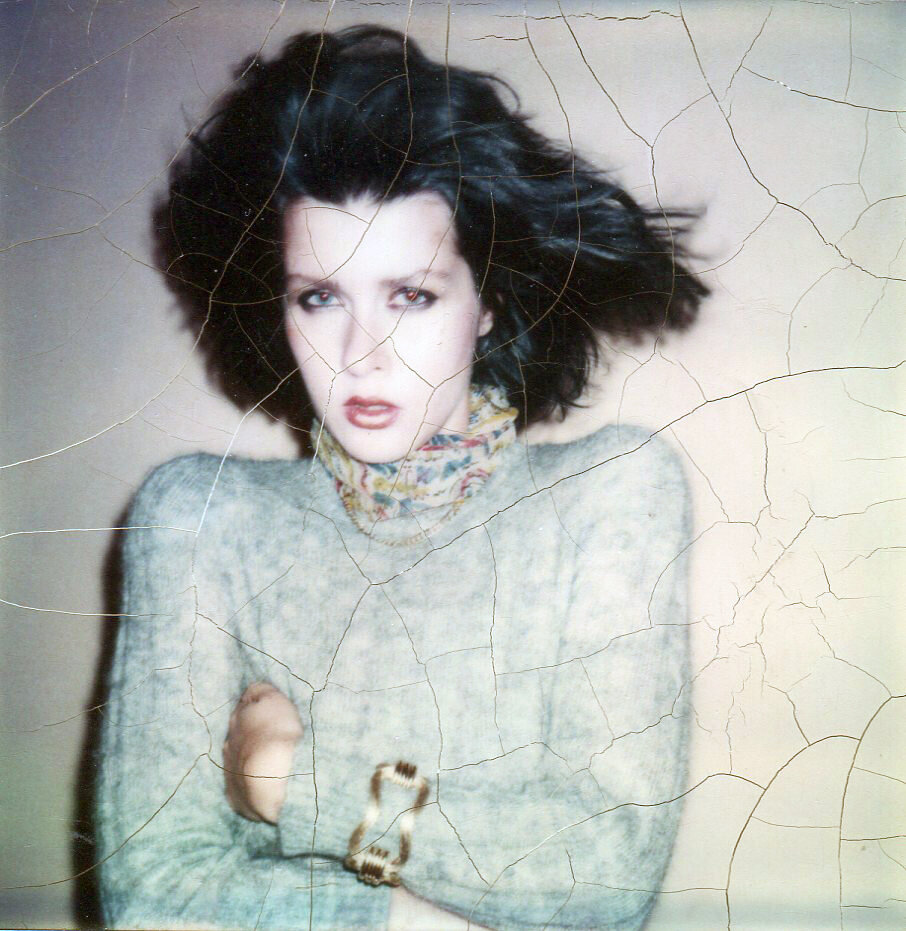
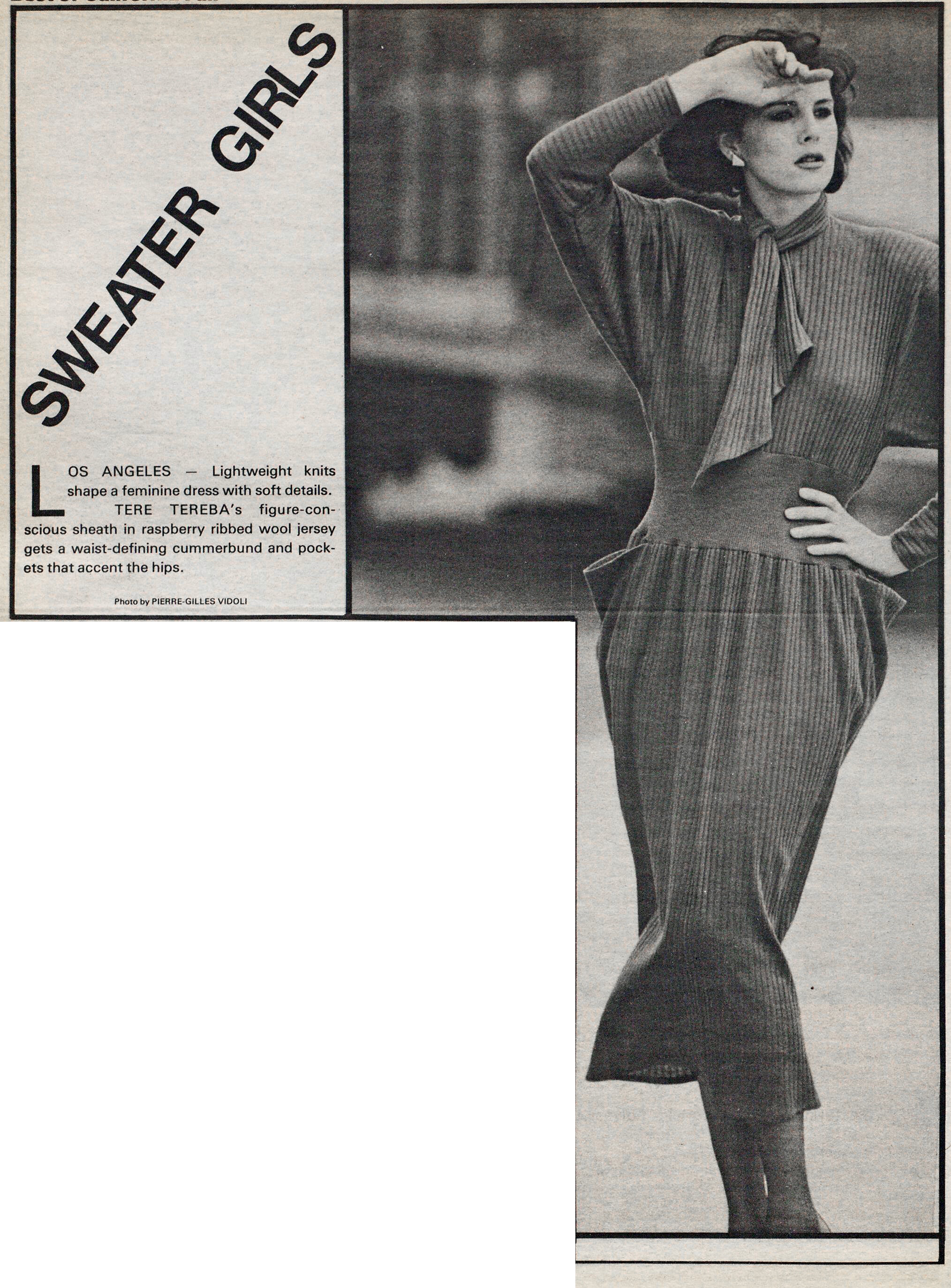

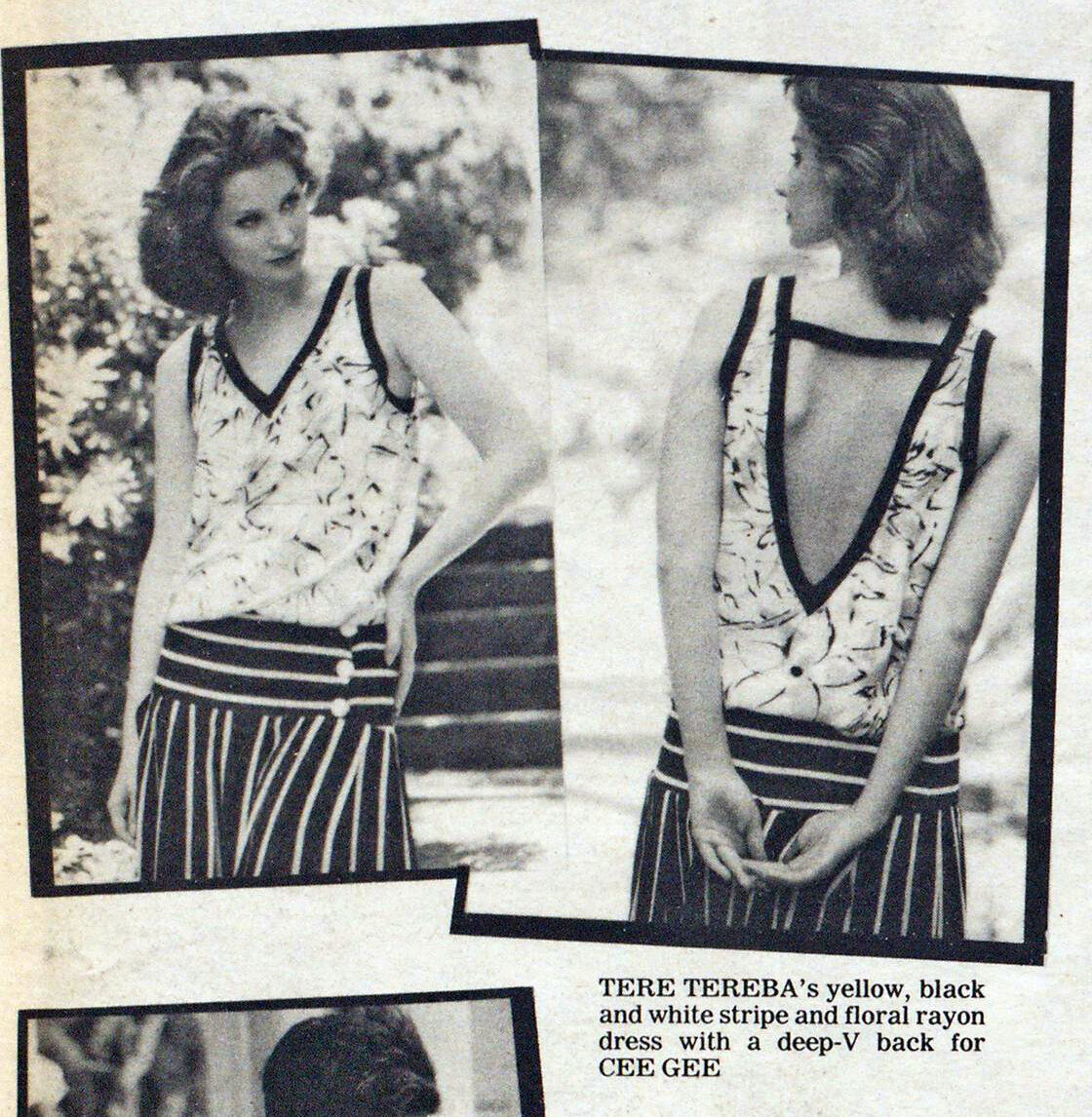
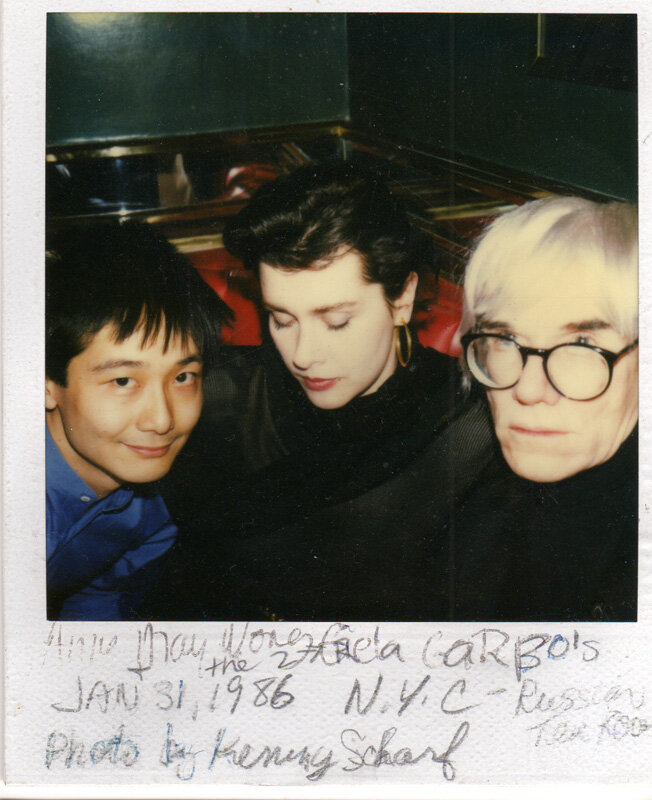
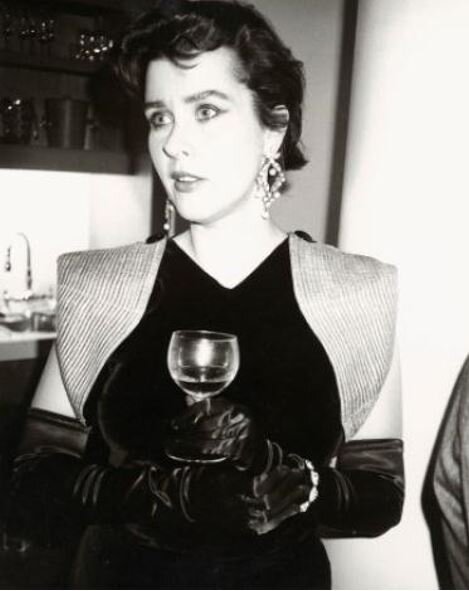


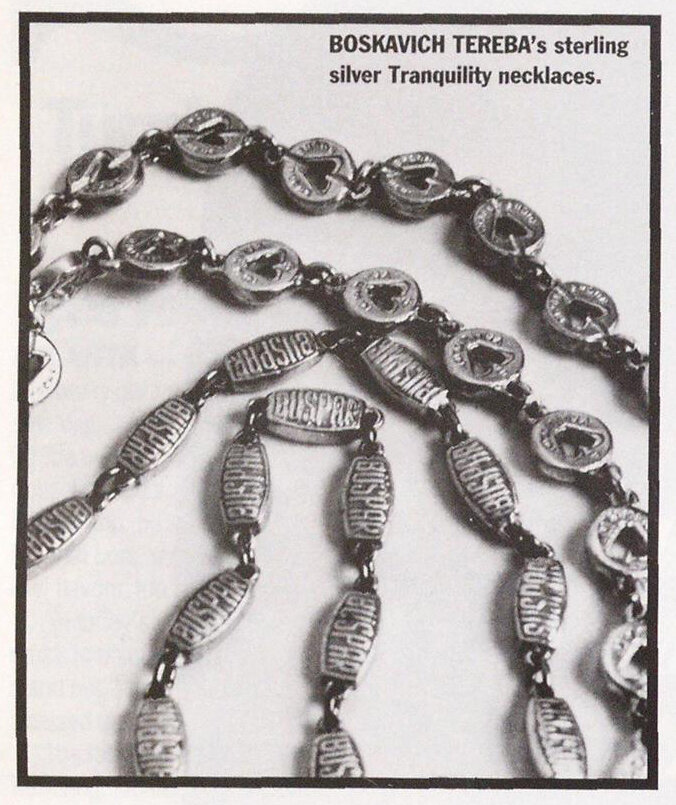

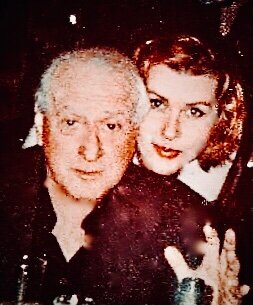

Tere Tereba by famed photographer George Hurrell for Interview magazine, 1977.
Part of what led me to become a fashion historian was my obsessive love of late 1960s and early 1970s fashion. Collecting from an early age, I wanted to learn everything about the designers and long-forgotten stores I read about in old magazine issues or found on labels in thrift store pieces. I would throw myself into researching (not always easy pre-internet), but would often discover true marvels. My latest guest is Tere Tereba, a fashion designer, actress, writer and all-around creative. Sometime around fifteen years ago I found a Malibu Media dress in a vintage shop and, with the label stating “Tere Tereba for Malibu Media,” started googling—thereby becoming acquainted with her quite remarkable story.
Malibu Media ad. WWD, August 1, 1979.
Tere was raised in Ohio, before moving to Los Angeles at thirteen after a brief time in Florida. It was there that her aesthetic and life story would truly be defined. In the wake of the Beatles and the British invasion, when European boutique labels started appearing in fashionable shops in Los Angeles alongside the innovative work of LA-based Rudi Gernreich, Tere became interested in fashion. Wanting more than what was available in those stores, she started to design herself and quickly found herself apprenticing at Arpeja, the largest LA-based multi-brand fashion company who owned Young Edwardian, Young Innocent and many others. Still a teenager, Tereba moved from apprentice to designer and by the early 1970s was already making a name for herself—as she describes it, “Teen Dream realized: Arpeja made THE cutting-edge fashion of the period and had the greatest success and highest profile, with top store placement and a provocative national advertising campaign. It was in the best stores, both high end department stores and boutique, around the country that were then heavily moving into servicing the ‘Youthquake' movement of baby boomers. Designing there had no restrictions, and cost was never spared.” Over the next twenty years Tereba designed for all of the major Los Angeles fashion companies and their numerous brands, producing clothes that were sold in hundreds of stores across the nation.
Among the many subjects we discuss in this interview is the set-up of these companies and the fashion industry at the time, and how this structure changed and disintegrated by the time she left fashion in the early 2000s—for anyone interested in fashion history, especially that of more mass-market brands and department stores, this interview is really a must-listen. Starting with juniors brands, as her clientele aged Tere’s work shifted to more contemporary lines. In the late 80s into the early 90s Tere had her own eponymous label of expensive clothing that debuted at Henri Bendel’s in New York City and was sold in exclusive boutiques that primarily focused on emerging European lines. Around this time she also came out with her own jewellery line, Boskovich Tereba, with the artist John Boskovich. After a hiatus, at the beginning of the millennium she briefly stepped back into the industry to help revitalize a then-struggling bebe. While she loved fashion it was never the main focus of her life—she more so saw it as her career, and just one interest among many.
Alongside her high-powered fashion design career, Tere maintained a very busy social life among the upper echelons of the film and art worlds—good friends with the likes of Andy Warhol, she also spent a lot of time in Paris and Rome in the 1970s with the crème de la crème of the European movie world. After many years of friendship she acted in Andy Warhol’s Bad (1977) alongside Carroll Baker. Instilled with a deeply curious mind and creative brain, Tere brought an elevated aesthetic sense to all aspects of her life—from her career to her relationships and her exquisitely designed homes. Years ago I came across a 1983 issue of Architectural Digest that featured her LA house (see below). Designed in collaboration with the architect/interior decorator Anthony Machado, it is a magnificent and unique spin on Art Deco that he termed “Hollywood Royale”—“a visual language of dramatic gestures in design developed from the great movies of the past,” a worthy backdrop for Tere’s riveting life.
Jerry Leiber and Tere.
In her forties Tere fell in love with Jerry Leiber, the legendary songwriter who with his long-term partner Mike Stoller wrote and produced many of the most enduring classics of rock ’n’ roll, including “Hound Dog,” “Is That All There Is?’ and “Stand By Me.” A true love story, the pair were together for 16 years until his death in 2011. While together she began researching and writing a book on the Los Angeles gangster Mickey Cohen—a ten-year process that culminated in the publication of Mickey Cohen: The Life and Crimes of L.A.'s Notorious Mobster in 2012.
When we spoke in June Tere was preparing for a move to Santa Fe, a decision brought on by the changes in her long-time home Los Angeles over the pandemic. She speaks very openly and honestly about all aspects of her career and the fashion industry, her friendships and loves, and the inspirations that have lit up her life.
Listen and subscribe to the podcast in iTunes

